U.S./China Relations and Financial Services Webinar Series
The economic relationship between the U.S. and China is evolving. Market drivers are working alongside developments in technology and national…

4:30pm – 5:30pm
Year 1 Orientation and Activity will take place at the Sheraton hotel (3549 Chestnut St., Philadelphia, PA 19104). Registration for Year 1 participants will occur prior to the start of the Orientation. After the activities are over, participants are invited to go to the Opening Night Reception at the Penn Museum (3620 South St., Philadelphia, PA 19104). The Penn Museum is about a 10 minute walk from the Sheraton hotel. Walking directions will be available in the SII mobile app.
5:30pm – 7:30pm
Join fellow participants and the SII Board of Trustees at the Penn Museum for a welcome reception to kick off Institute Week.
The Penn Museum address is 3260 South Street, Philadelphia, PA 19104. The museum is walking distance to the below hotel properties. Walking directions will be available on the SII mobile app. A shuttle will be provided from the Homewood Suites to the Inn at Penn then participants can walk over from The Inn.
7:15am – 8:15am
Breakfast will be served at all SII hotel properties.
8:45am – 10:15am
Almost everything we do involves words. Words are how we persuade, communicate, and connect. They’re how leaders lead, salespeople sell, and parents parent. Even our private thoughts rely on language. But certain words are more impactful than others. They’re better at changing minds, engaging audiences, and driving action. What are these magic words, and how can we take advantage of their power? This talk will give you an inside look at the new science of language and how you can use it. Learn how salespeople convince clients, lawyers persuade juries, and storytellers captivate audiences. How teachers get kids to help, startup founders secure funding, and service representatives increase customer satisfaction. This talk is designed for anyone who wants to increase their impact. It provides a powerful toolkit and actionable techniques that can lead to extraordinary results. Whether you’re trying to persuade a client, motivate a team, or get a whole organization to see things differently, it will show you how to leverage the power of magic words.
CIMA®, CPWA®, CIMC®, and RMA℠ Eligible
Jonah Berger

10:35am – 12:05pm
(Also offered on Monday at 3:20pm and Wednesday at 10:35am)
In this YI core course Professor Tiffany reviews the historical evolution of the American economy from the beginnings of the Republic up until the present day (participants will be assigned to one of three identical class sessions).
Pre-Program Videos: The course will start with three short videos, available for participant viewing prior to the sessions in Philadelphia. These required videos—approximately 30 minutes each– will provide background content so that the live session can focus on key issues and provide time for participant discussion. Following viewing, all participants will be required to respond to multiple-choice questions and submit their results to SII administrators. We will review responses in the sessions at Wharton.
Video I “Foundations” will begin with an emphasis on the foundations for future economic growth that were created at the beginning of the Republic, and which will take us up to 1865. In this we will emphasize how America differs from essentially all other nations of the world with its direct focus on individual property rights that were to be exercised in a capitalist market economy— rights captured in the Constitution– that continue down to the present time, and which in many respects continues to define the nation’s political issues. We then discuss the creation of the economic infrastructure that paved the way for the post-Civil War industrial boom.
Video II “The Rise of ‘Big Business’” will cover the period following the Civil War up through outbreak of World War II. By the end of the 19th Century a set of critical trends converged that were to shape the emergence of an economy dominated by the large industrial firm. This period is often characterized as the “Robber Baron” era of “creative destruction” and in which the entrepreneurial “Schumpeterian Hero” leveraged new technologies that profoundly transformed America and laid the groundwork for the nation’s global economic dominance in the 20th Century. Yet as the large firms prospered and America transformed into an industrial giant, another set of conditions began to arise that would challenge the hegemony of the corporation as the dominant institution in American life—that is, the Great Depression. Only a devastating global war brought this event to a close, and with it new restrictions on the relationship between business and government.
Video III “The ‘American Century’—and Beyond” will bring the discussion up to the present time. We will first review how the US economy reacted to the demands of another global war, and then how the outcome of that conflict set the stage for the emergence of the so-called “American Century” and the nation’s remarkable economic growth and prosperity up to the 1970s. Yet it was at this point in time that underlying problems began to surface, even though a second “Schumpeterian Era of Creative Destruction” was creating the “new economy” of technology-dominated businesses in the latter decade of the 20th Century. More significantly, the simultaneous advent of “globalization” that emerged in full by the start of the 21st Century began to threaten US world economic dominance, through the rise of China and other emerging nations—and a growing disparity in the financial returns from globalization that found fewer and fewer people gaining more and more of the benefits. The central issue we will discuss here: can the US sustain “the American Century” of global economic dominance going forward– or is it some other nation’s turn to lead?
March class: This will provide a forum in which all participants will be encouraged to offer their own perspective on key issues in US business and economic history and their implications for the future. The session will begin with (a) Professor Tiffany’s explication of five key take-aways from his video commentaries, (b) a review of participant response totals from the mandatory questions, (c) brief sharing by participants of ideas and insights with classmates, and (d) an open-mic discussion about where we go from here.
Learning Objectives:
Pre-Class Assignment – Videos with Multiple Choice Questions
CFP®, CIMA®, CPWA®, CIMC®, and RMA℠ Eligible
Paul Tiffany

(Also offered on Monday at 3:20pm)
The MicroInequities: Managing Unconscious Bias™ program goes beyond the conventional approaches to managing Unconscious Bias in the workplace. This session does not focus on the ‘warm and fuzzy’ or ‘touchy feely side of this topic. Instead, Insight Education Systems, in its collaboration with M.I.T. has developed meaningful and actionable solutions to actively manage unconscious bias in the workplace—actions that result in meaningful behavior change. It provides the techniques and tools that make people skilled at driving change—not just being aware.
Being smarter about Unconscious Bias isn’t good enough—People must become motivated and skilled. Participants leave the session with the ability to immediately put what they learned into action to improve the quality of their own performance and enhance the ways others can be motivated to perform.
Learning Objectives:
Stephen Young
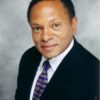
(Also offered on Monday at 3:20pm)
The old saying that change is the only constant seems truer than ever. How can we help our organizations not only survive, but thrive in moments when volatility and uncertainty threaten to derail even the best-laid strategic plans? In this session, we will learn practical strategies for building resilience, drawn from timeless social science insights about human behavior, and applied to current, real-world business challenges. We will explore resilience at three levels: 1) Building individual resilience in the self and others to weather challenging moments; 2) Building team resilience to keep people motivated and engaged to solve complex challenges; 3) Building organizational resilience to maintain the adaptability and innovative habits needed to stay ahead of the curve. Through a combination of evidence-based frameworks, engaging group activities and dialogue, this session will help participants at any level of the organization build and maintain grit and agility.
CIMA®, CPWA®, CIMC®, and RMA℠ Eligible
Derek Newberry

In many industries today, and especially in finance, organizations operate in ecosystems made up of powerful and highly interconnected stakeholders. Companies that figure out how to manage this complexity will enjoy a powerful competitive advantage in finding and selecting innovations. Participants will be introduced to a tool-based ideation process that helps them think through ways of innovating their companies’ product or service offerings. The methodology allows managers to identify innovation growth opportunities and select insightfully among them, thus ensuring that the company is responsive not only to the pressing needs of the direct customers, but also to the needs and concerns of the other stakeholders in its ecosystem. The session will conclude with a workshop that allows participants to apply the tools to their industry.
Learning Objectives:
Pre-Class Assignment – Reading
CIMA®, CPWA®, CIMC®, and RMA℠ Eligible
Martin Ihrig

(Also offered on Tuesday at 3:20pm and Wednesday at 8:45am and 3:20pm)
Creating a good business case is necessary to help leaders make good decisions on allocating resources. A good business plan is also a blueprint for success. This module will explain the key elements of a business case and discuss how to evaluate and measure business impact. Four key elements such as the market and business opportunity, link to competitive advantage, communicating a business / economic / operating model and ability to implement will be discussed. A shark-tank like exercise will be used as a case exercise to give practice on developing executive summaries of ideas to be funded. We will also explore the concept of risk to understand and communicate the uncertainties of a business case using a real world case example. This will be a practical session focused on the qualitative elements that can be used to better inform and evaluate the business cases you submit and review.
Pre-Class Assignment – Reading
CIMA®, CPWA®, CIMC®, and RMA℠ Eligible
Joseph Perfetti

The 21st century has and will continue to see a revolution in the way we think about money. In this session, financial historian and legal scholar Peter Conti-Brown will provide an overview of what money is, where it comes from, and where it is going. He will focus on revolutions to the payment system, including central bank digital currency, crypto currency, and stablecoins; what new regulatory approaches to fintech will mean; and what entrepreneurial options you should watch in 2023 and beyond.
CFP®, CIMA®, CPWA®, CIMC®, and RMA℠ Eligible
Peter Conti-Brown
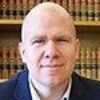
(Also offered on Monday at 3:20pm)
Leaders inspire, build capacity in others, lead change, and motivate employees to do more than they thought possible. This session includes a short exercise where we watch film clips to identify inspirational leadership behaviors. The team exercise involves teams participating in a video case about the Civil War Battle of Gettysburg, a dynamic and situation where they must determine how to inspire soldiers to overcome their frustrations to fight along with their unit. Each team presents an inspiring vision and employs inspirational behaviors to respond to the crisis. Selected individuals deliver the team’s vision statement to the class. Learning Objectives After this session, you should be able to: – Discuss the impact of ambiguity and uncertainty on individual psychology and performance – Recognize the components and leader behaviors associated with inspirational leadership: leadership that promotes a personal connection, builds confidence, demonstrates a caring attitude, and includes great expectations – Employ these behaviors in a video case, and learn how to construct and effectively communicate a vision for followers.
Learning Objectives:
Todd Henshaw

(Also offered on Monday at 3:20pm)
“All the world’s a stage, and all the men and women merely players”, wrote Shakespeare. Leaders often step onto stage – to present an idea, influence a decision, ask for more resources, or inspire others to action – and these experiences require practice, poise, presence, and purpose. This session aims to understand what separates a good from a great speaking engagement and offers tangible skills to strengthen your public presence. These skills are not only useful for large presentations with dozens or hundreds in the audience but also for smaller gatherings, client meetings, team huddles, and other crucial business interactions where public speaking can be a difference maker. Not only will this session focus on outward-facing skills but will also help connect a leader’s public presence with their own authentic self. While some might argue that strong public speakers possess this skill innately, this workshop will prove otherwise as we demystify the building blocks of public speaking and train ourselves to strengthen our own engagement with audiences. By learning to be more “present,” participants will understand how to be more motivational as a leader, more convincing as a negotiator and more open and honest as a team member. This workshop develops and utilizes a practical toolkit for leaders to continue working on their public speaking and their ability to communicate their vision and their story long after the workshop has ended.
Learning Objectives:
Quinn Bauriedel

(Also offered on Monday at 1:30pm)
This session focuses on a strengths-based approach to leadership at and outside of work. Using tools developed through decades of research, hundreds of peer-reviewed studies, and millions of surveys, this body of knowledge is unique and provides answers to questions like who do I need to be? and what does it mean to come from a position of strength? Focusing on what is wrong, areas of weakness, or things that need to be improved can only take us so far, combined with what’s working well, our strengths, we can harness a lot more potential. This session takes a deep dive into the language of strengths and how to apply them.
Participants will learn:
Pre-Class Assignment – Assessment
Faisal Khan

In the VUCA world change is a constant. The COVID pandemic was a stark reminder how important are leaders who know how to lead change and not just manage a change process. In the session, we will identify key change leadership roles and opportunities as well as how to overcome the obstacles. Using examples, discussion and video clips we also explore how employees experience change, and how leaders can guide them through the change process while providing growth opportunities.
Learning Objectives:
Dafna Eylon

(Also offered on Monday at 3:20pm)
The pandemic pulled the future forward. Remote & hybrid work are here to stay, and digital skills are accelerating across all sectors. Human centered and adaptive leaders will more effectively propel their teams for change. Modern leaders will think of their employees as customers to move their teams forward by creating inclusive communities for teams to thrive. In parallel, we are also experiencing an unprecedented acceleration in technology that is shaping the future of work. Machine learning and data science are completely changing the skills needed for work. As jobs evolve, even nontechnical roles will feel the impact of automation. LinkedIn data indicates we can expect to see demand rise in four general categories of skills: specialized technical skills, critical thinking skills, human-centered softs skills, and digital fluency. Facing an uncertain economic environment in 2023; upskilling, employee engagement and retaining top talent are more critical than ever. Join us to learn more about these evolving trends through LinkedIn’s real-time insights built from over 875 million members globally and LinkedIn’s comprehensive skills taxonomy of over 39,000 skills.
In this session, we will discuss how to best navigate the evolving trends by harnessing curiosity, increasing opportunities for collaboration & skills growth and ultimately impact business success.
Learning Objectives:
Adrian Reyes

(Also offered on Wednesday at 8:45am)
Economies and markets globally are impacted by the policy actions of Central Banks, especially the US Federal Reserve System (FED). Perhaps this has never been more true than now, as Central Banks fight inflation. Worldwide inflation has been boosted by expansionary policies to recover from the pandemic’s steep blow to the economy, the supply chain problems stemming from the Covid restrictions by China and other major exporters, and the unprovoked Russian invasion of Ukraine.
Central Banks such as the FED have a predominant influence on interest rates, which have major impacts on economies and financial markets. Even before the worldwide economic recession (essentially, a short depression) in Spring 2020, caused by pandemic lockdowns, many Central Banks had somewhat expansionary monetary policies. This meant they engineered low, and in some cases in Europe and Japan negative, interest rates.
Monetary policy became much more expansionary or “loose” to restore economies after the pandemic led to record unemployment in April 2020. The FED slashed interest rates near zero. The FED along with Central Banks in Europe and the Bank of Japan, launched massive Quantitative Easing (QE). QE is a strong and steady ballooning of the FED’s balance sheet, as it buys Treasury Securities and mortgage-backed securities from banks. These asset purchases increased banks’ deposits at the Fed (the FED’s liabilities), from which banks could ease or expand the supply of credit. The goal was to spur economic recovery. This was successful.
The problem was that the massive expansion of credit and near-zero interest rates led to investors rushing into stocks and real estate (there is no alternative or TINA). Seeing other people gain wealth, others jumped in (fear of missing out or FOMO) and the US had asset price inflation.
Consumer price inflation was already rising, then the Russian invasion exacerbated it greatly. The FED has a dual mandate to maximize employment while also keeping inflation low and steady. The FED monitors key variables related both to the job market and to inflation. We will analyze different gauges on the Federal Reserve’s “job market dashboard” and its “inflation dashboard.” Pre-pandemic the U.S. exceeded ‘full employment’ as commonly defined and measured by the unemployment rate. However, other metrics did not indicate truly full employment. Of course, the pandemic led to massive underemployment globally. We will analyze various forms of underemployment. Next, we portray the improving job market from the trough in April 2020 until now.
Our analysis of the “job market dashboard” and the “inflation dashboard” will highlight metrics which are crucial for the FED’s decisions about interest rates. These decisions have a strong influence on financial markets. We will discuss the recent path and forecasts for inflation and unemployment, given the FED’s targets.
The FED has succeeded in maximizing employment. However, inflation skyrocketed far above its 2% target. Thus, in Spring 2022 the FED started a continuing series of interest rate increases. The FED did this more aggressively than other Central Banks. This meant that interest rates in the US exceeded those in other advanced economies. Money flowed into the US to gain these higher yields. To get the yields on assets denominated in $US, foreign people and institutions had to buy dollars, appreciating their foreign exchange value. A positive aspect of this is that it makes imports cheaper, which could pressure inflation downwards. A negative is that a more expensive dollar could increase the already massive US trade deficit.
Finally, aware of the racial inequality and the need for systemic justice in the US, the FED has been working on an implicit third mandate: to use monetary policy to try to improve economic opportunity for all. We will discuss this new focus.
This session will engage participants in analyzing the current state and prospects for monetary policy. This will enable participants to explore the future of economies and financial markets.
Learning Objectives:
CFP®, CIMA®, CPWA®, CIMC®, and RMA℠ Eligible
Jeffrey Rosensweig

To succeed, businesses have to understand their customers – from determining their wants and needs to delivering customer satisfaction and maintaining relationships. What drives their decisions? What motivates them to take (or not take) action? This presentation will discuss practical, science-based insights to better understand customer behavior, and how to use those insights to drives success. From avoiding decision quicksand to how people process information, I’ll share tools to shape the choice context, increase influence, and drive customer growth.
Learning Objectives:
CIMA®, CPWA®, CIMC®, and RMA℠ Eligible
Jonah Berger

12:15pm – 1:15pm
Check your mobile app for location.
1:30pm – 3:00pm
(Also offered on Tuesday at 3:20pm)
Everyone agrees that people, firms, and the financial industry in general need good ethics. But this only prompts the question. What does it mean to be ethical? Unfortunately, most of the answers we hear on this question are talking about something else—legal obligations, compliance, marketing, and more. In this session, Professor Peter Conti-Brown takes participants on a tour of unlearning by showing how ethical decision-making differs from these other domains. Instead, ethical decision-making is about values and business strategy, not peripheral to the day-to-day of performing your job at the highest level but central to it. Using examples from the financial services and other industries, Conti-Brown challenges participants to think hard about the ongoing challenge not only to identify unethical behavior but the more difficult task of building ethical individuals, teams, and firms.
CIMA®, CPWA®, CIMC®, and RMA℠ Eligible
Peter Conti-Brown

(Also offered on Tuesday at 1:30pm)
Public policy always impacts economies and financial markets. Such impacts are particularly pronounced now. The uncertainty surrounding trade, fiscal, geopolitical, and monetary policy is contributing to heightened market volatility.
Federal budgetary policy, termed fiscal policy, has been and will be a driving force. The pandemic cost the US 22 million jobs in March and April 2020. An expansionary fiscal policy, starting with the $2.3 trillion CARES act, helped lift the economy, but at the cost of a $3.1 trillion federal deficit in 2020. Trillions of fiscal spending beyond the normal budget led to another fiscal deficit of $2.8 trillion in 2021. The federal deficit for 2022 was halved, but still massive at $1.4 trillion dollars. This was before spending coming from the infrastructure or ‘build back better’ program of President Biden. If student debt is partially forgiven, that will further exacerbate deficits.
Pre-pandemic, the Tax Reform package was the major economic initiative of the Trump administration and Congress. We will analyze the economic and financial impacts of President’s Trump’s fiscal policies. The tax cuts likely contributed to the “Trump bump” in economic growth and the stock market during 2018 – 2019. However, the tax cuts increased the Federal Government deficit, even before it exploded during the pandemic. We will discuss possible future scenarios.
Fiscal deficits imply government borrowing, achieved by issuing more Treasury Securities. Thus, deficits add to a Gross Federal Debt that has jumped significantly to roughly $31.5 trillion. A massive increase of $8 trillion from $23.5 trillion a mere three years ago! If the deficits increase as forecast over the next decade, will the US government debt become so large that people and institutions, US and non-US, will not want to hold it? If so, bond prices would decline, market interest rates would rise, and the sustainability of the debt will become a crucial issue. Until recently, historically low interest rates have kept the US debt burden in check. However, the steep increases in interest rates engineered by the Federal Reserve in the past year are boosting the interest payments on the federal debt and thus exacerbating the US fiscal deficit. Deficits add to debt, which must be serviced by interest payments, so the threat of a vicious circle of deficits and debt could loom.
Further, government deficits can exacerbate trade deficits. Overspending by the government can lead to overspending by the nation, including on imports. This seems to be the case in the US in recent years, and probably during recent decades. The trade deficits inspired President Trump to turn toward protectionist trade policy. Trump’s trade policies risked trade wars, especially with China, resulted in an improved “new NAFTA,” which he renamed USMCA, and added uncertainty to the financial outlook. The world awaits more information on President Biden’s trade policies, which for now mainly continue Trump’s policies. The impact on business and markets of potential new trade policies will be analyzed.
Driving forces that could lead to more restrictive or protectionist trade policies are subsumed under the term deglobalization. The pandemic has exposed the problem of globalized supply chains, aiming to achieve maximum efficiency under free trade. Now, nations and firms are focusing more on the resiliency of supply chains, to avoid dependency on foreign suppliers. Further, the US (and some other major economies) face many geopolitical risks and international “hot spots” of potential conflict. Thus, policy towards national security will be crucial. Impacts are likely to be felt during 2023 and beyond in the economy, in business opportunities, in financial markets, and in the Biden approach to foreign policy.
The overarching goal of this elective is to engage SII participants in an exploration of relevant US policies now and in the future.
Learning Objectives:
CFP®, CIMA®, CPWA®, CIMC®, and RMA℠ Eligible
Jeffrey Rosensweig

Everyone has something they want to change. Advisors want to change the client’s minds and leaders want to change organizations. Employees want to change their boss’ minds, Startups want to change industries, and non-profits want to change the world. But change is hard. We push and push, but often nothing happens. Could there be a better way? The Catalyst: How to Change Anyone’s Mind introduces a revolutionary approach to change. Successful change isn’t about pushing harder or exerting more energy. It’s about removing barriers. Overcoming resistance by reducing friction and lowering the hurdles to action. Discover the five hidden factors that impede change, and how by mitigating them, you can change anything.
Learning Objectives:
CIMA®, CPWA®, CIMC®, and RMA℠ Eligible
Jonah Berger

(Also offered on Wednesday at 8:45am)
While technology is always changing, there are three key areas to focus on that will have a major impact on you, your company, your industry, and your country over the rest of your career. Learn what they are, why they matter, their latest advances, and what decisions you can make now that will be the difference between success and failure going forward. Whole new ways to compute, communicate, and decision are coming, and with them will be great risks and great opportunity. Get informed, involved, and advanced with the security aspects of Artificial Intelligence, Quantum Computing, and 5G communications in this fast-paced class.
CIMA®, CPWA®, CIMC®, and RMA℠ Eligible
Tom Patterson

(Also offered on Wednesday at 3:20pm)
According to the World Economic Forum, we live in what is referred to as the Fourth Industrial Revolution. The speed of current breakthroughs has no historical precedent. Compared with previous industrial revolutions, the Fourth is evolving at an exponential rather than a linear pace. It is disrupting every industry in every country and will fundamentally alter the way we live, work, and relate to one another.
Learning Objectives:
CIMA®, CPWA®, CIMC®, and RMA℠ Eligible
John Spence
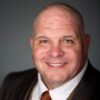
This session will investigate why healthcare spending always goes up, what are the drivers, and what can be done about it.
Learning Objectives:
Pre-Class Assignment – Reading
CFP®, CIMA®, CPWA®, CIMC®, and RMA℠ Eligible
Lawton Burns

Driving Inclusion and Diversity has been a critical priority for organizations for many years, and open dialogue about what has worked and what has not, has accelerated since the increased focus on social and economic justice following the death of George Floyd. Our Industry has undertaken many initiatives in this space, beyond public rhetoric and conversations on the topic. There is an immediate opportunity for the Financial Services Industry to drive collective improvement of the financial health of diverse and underserved communities, as well as their representation in the Industry.
Research provides us with many insights into how we can generate results, as well as the scope of the opportunity, which suggests great improvement in the sustainable long term business models for our Firms. Participants leave the session with a better appreciation for why I&D matters from multiple perspectives, actions which can help narrow the wealth gap in diverse communities and business opportunities created, as well as approaches to create a more diverse workforce in the Financial Services Industry.
Learning Objectives:
CIMA®, CPWA®, CIMC®, and RMA℠ Eligible
George Nichols III
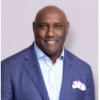
(Also offered on Monday at 10:35am)
This session focuses on a strengths-based approach to leadership at and outside of work. Using tools developed through decades of research, hundreds of peer-reviewed studies, and millions of surveys, this body of knowledge is unique and provides answers to questions like who do I need to be? and what does it mean to come from a position of strength? Focusing on what is wrong, areas of weakness, or things that need to be improved can only take us so far, combined with what’s working well, our strengths, we can harness a lot more potential. This session takes a deep dive into the language of strengths and how to apply them.
Participants will learn:
Pre-Class Assignment – Assessment
Faisal Khan

As in previous decades the early 2020s brought us face to face with some challenging events regarding DEI in our workplaces, communities and nation. Many of us promptly responded allocating resources, sponsoring events, addressing policies, etc.. Also as occurred in previous decades the level of DEI focus and support appears to be waning over time. Why is DEI appearing to lose momentum? Some are referring to this condition as DEI Fatigue.
In this interactive session we will:
CIMA®, CPWA®, CIMC®, and RMA℠ Eligible
Janie L. Mines

3:20pm – 4:50pm
(Also offered on Monday at 10:35am and Wednesday at 10:35am)
In this YI core course Professor Tiffany reviews the historical evolution of the American economy from the beginnings of the Republic up until the present day (participants will be assigned to one of three identical class sessions).
Pre-Program Videos: The course will start with three short videos, available for participant viewing prior to the sessions in Philadelphia. These required videos—approximately 30 minutes each– will provide background content so that the live session can focus on key issues and provide time for participant discussion. Following viewing, all participants will be required to respond to multiple-choice questions and submit their results to SII administrators. We will review responses in the sessions at Wharton.
Video I “Foundations” will begin with an emphasis on the foundations for future economic growth that were created at the beginning of the Republic, and which will take us up to 1865. In this we will emphasize how America differs from essentially all other nations of the world with its direct focus on individual property rights that were to be exercised in a capitalist market economy— rights captured in the Constitution– that continue down to the present time, and which in many respects continues to define the nation’s political issues. We then discuss the creation of the economic infrastructure that paved the way for the post-Civil War industrial boom.
Video II “The Rise of ‘Big Business’” will cover the period following the Civil War up through outbreak of World War II. By the end of the 19th Century a set of critical trends converged that were to shape the emergence of an economy dominated by the large industrial firm. This period is often characterized as the “Robber Baron” era of “creative destruction” and in which the entrepreneurial “Schumpeterian Hero” leveraged new technologies that profoundly transformed America and laid the groundwork for the nation’s global economic dominance in the 20th Century. Yet as the large firms prospered and America transformed into an industrial giant, another set of conditions began to arise that would challenge the hegemony of the corporation as the dominant institution in American life—that is, the Great Depression. Only a devastating global war brought this event to a close, and with it new restrictions on the relationship between business and government.
Video III “The ‘American Century’—and Beyond” will bring the discussion up to the present time. We will first review how the US economy reacted to the demands of another global war, and then how the outcome of that conflict set the stage for the emergence of the so-called “American Century” and the nation’s remarkable economic growth and prosperity up to the 1970s. Yet it was at this point in time that underlying problems began to surface, even though a second “Schumpeterian Era of Creative Destruction” was creating the “new economy” of technology-dominated businesses in the latter decade of the 20th Century. More significantly, the simultaneous advent of “globalization” that emerged in full by the start of the 21st Century began to threaten US world economic dominance, through the rise of China and other emerging nations—and a growing disparity in the financial returns from globalization that found fewer and fewer people gaining more and more of the benefits. The central issue we will discuss here: can the US sustain “the American Century” of global economic dominance going forward– or is it some other nation’s turn to lead?
March class: This will provide a forum in which all participants will be encouraged to offer their own perspective on key issues in US business and economic history and their implications for the future. The session will begin with (a) Professor Tiffany’s explication of five key take-aways from his video commentaries, (b) a review of participant response totals from the mandatory questions, (c) brief sharing by participants of ideas and insights with classmates, and (d) an open-mic discussion about where we go from here.
Learning Objectives:
Pre-Class Assignment – Videos with Multiple Choice Questions
CFP®, CIMA®, CPWA®, CIMC®, and RMA℠ Eligible
Paul Tiffany

(Also offered on Monday at 10:35am)
The MicroInequities: Managing Unconscious Bias™ program goes beyond the conventional approaches to managing Unconscious Bias in the workplace. This session does not focus on the ‘warm and fuzzy’ or ‘touchy feely side of this topic. Instead, Insight Education Systems, in its collaboration with M.I.T. has developed meaningful and actionable solutions to actively manage unconscious bias in the workplace—actions that result in meaningful behavior change. It provides the techniques and tools that make people skilled at driving change—not just being aware.
Being smarter about Unconscious Bias isn’t good enough—People must become motivated and skilled. Participants leave the session with the ability to immediately put what they learned into action to improve the quality of their own performance and enhance the ways others can be motivated to perform.
Learning Objectives:
Stephen Young

(Also offered on Thursday at 3:20pm)
You can’t drive a car looking in the rear-view mirror. Traditional metrics are backward looking. They keep score. What did you do last month, last quarter and last year? Companies need to keep score to assess performance: growth, margin, return on equity, and total shareholder return are common metrics. They do not tell you how the company will do in the future. Value is about the future. In the age of agile, companies need to increasingly start putting forward looking and predictive metrics on their dashboards. The Agile Dashboard was researched and developed to help organizations address this gap. The Agile Dashboard looks at three categories of metrics: Speed, Interaction Time and Pivot. These are critical elements for leaders to monitor whether their organizations are prepared to operate successfully in an uncertain future. This session will explain each of the three sections of the Agile Dashboard, provide metrics for each and share examples of their applicability to financial organizations.
Pre-Class Assignment – Reading
CIMA®, CPWA®, CIMC®, and RMA℠ Eligible
Joseph Perfetti

(Also offered on Monday at 10:35am)
The old saying that change is the only constant seems truer than ever. How can we help our organizations not only survive, but thrive in moments when volatility and uncertainty threaten to derail even the best-laid strategic plans? In this session, we will learn practical strategies for building resilience, drawn from timeless social science insights about human behavior, and applied to current, real-world business challenges. We will explore resilience at three levels: 1) Building individual resilience in the self and others to weather challenging moments; 2) Building team resilience to keep people motivated and engaged to solve complex challenges; 3) Building organizational resilience to maintain the adaptability and innovative habits needed to stay ahead of the curve. Through a combination of evidence-based frameworks, engaging group activities and dialogue, this session will help participants at any level of the organization build and maintain grit and agility.
CIMA®, CPWA®, CIMC®, and RMA℠ Eligible
Derek Newberry

How do you build trust, make decisions, and disagree with a colleague or boss from a different culture? Do you come from a country that avoids confrontation in team settings, or one in which open debate is a positive attribute of collective work? Do you believe the best leader is one who facilitates among equals, or one who follows set hierarchical lines? What explains why junior pilots from one country stay silent when the captain veers off course but might speak up if from another? In this session, we will map the world’s cultures along eight dimensions to show how ingrained ideas about hierarchy and trust determine behavior in work settings. Participants will also take a personality test to identify their own cultural orientation and how to translate this awareness into building productive relationships across diverse, multicultural, and global teams in the virtual and in-person settings.
CIMA®, CPWA®, CIMC®, and RMA℠ Eligible
Sudev Sheth

(Also offered on Monday at 10:35am)
Leaders inspire, build capacity in others, lead change, and motivate employees to do more than they thought possible. This session includes a short exercise where we watch film clips to identify inspirational leadership behaviors. The team exercise involves teams participating in a video case about the Civil War Battle of Gettysburg, a dynamic and situation where they must determine how to inspire soldiers to overcome their frustrations to fight along with their unit. Each team presents an inspiring vision and employs inspirational behaviors to respond to the crisis. Selected individuals deliver the team’s vision statement to the class. Learning Objectives After this session, you should be able to: – Discuss the impact of ambiguity and uncertainty on individual psychology and performance – Recognize the components and leader behaviors associated with inspirational leadership: leadership that promotes a personal connection, builds confidence, demonstrates a caring attitude, and includes great expectations – Employ these behaviors in a video case, and learn how to construct and effectively communicate a vision for followers.
Learning Objectives:
Todd Henshaw

(Also offered on Monday at 10:35am)
“All the world’s a stage, and all the men and women merely players”, wrote Shakespeare. Leaders often step onto stage – to present an idea, influence a decision, ask for more resources, or inspire others to action – and these experiences require practice, poise, presence, and purpose. This session aims to understand what separates a good from a great speaking engagement and offers tangible skills to strengthen your public presence. These skills are not only useful for large presentations with dozens or hundreds in the audience but also for smaller gatherings, client meetings, team huddles, and other crucial business interactions where public speaking can be a difference maker. Not only will this session focus on outward-facing skills but will also help connect a leader’s public presence with their own authentic self. While some might argue that strong public speakers possess this skill innately, this workshop will prove otherwise as we demystify the building blocks of public speaking and train ourselves to strengthen our own engagement with audiences. By learning to be more “present,” participants will understand how to be more motivational as a leader, more convincing as a negotiator and more open and honest as a team member. This workshop develops and utilizes a practical toolkit for leaders to continue working on their public speaking and their ability to communicate their vision and their story long after the workshop has ended.
Learning Objectives:
Quinn Bauriedel

(Also offered on Monday at 10:35am)
The pandemic pulled the future forward. Remote & hybrid work are here to stay, and digital skills are accelerating across all sectors. Human centered and adaptive leaders will more effectively propel their teams for change. Modern leaders will think of their employees as customers to move their teams forward by creating inclusive communities for teams to thrive. In parallel, we are also experiencing an unprecedented acceleration in technology that is shaping the future of work. Machine learning and data science are completely changing the skills needed for work. As jobs evolve, even nontechnical roles will feel the impact of automation. LinkedIn data indicates we can expect to see demand rise in four general categories of skills: specialized technical skills, critical thinking skills, human-centered softs skills, and digital fluency. Facing an uncertain economic environment in 2023; upskilling, employee engagement and retaining top talent are more critical than ever. Join us to learn more about these evolving trends through LinkedIn’s real-time insights built from over 875 million members globally and LinkedIn’s comprehensive skills taxonomy of over 39,000 skills.
In this session, we will discuss how to best navigate the evolving trends by harnessing curiosity, increasing opportunities for collaboration & skills growth and ultimately impact business success.
Learning Objectives:
Adrian Reyes

5:30pm – 6:30pm
Sponsored by Robert W. Baird & Co. Incorporated.
Join fellow SII participants and the SII Board of Trustees at The Sheraton (3549 Chestnut St, Philadelphia, PA 19104) for a networking reception.
7:15am – 8:15am
Breakfast will be served at all SII hotel properties.
8:45am – 10:15am
(Also offered on Thursday at 8:45am)
This engaging session focuses on common cognitive biases that afflict even the best decision makers. A number of biases are illustrated in the context of day-to-day judgments and decisions that we make in both our professional and personal lives. Through a series of examples, specific decision failures are identified and analyzed. The implications of these decision traps are examined, and recommendations on how to improve our decision skills offered.
Learning Objectives:
Roch Parayre

(Also offered on Wednesday at 8:45am)
Over the past few decades, an evolving conversation has taken place across organizations about the challenges – and benefits – of managing generational differences at work. The dynamics of generational diversity has only been amplified since the COVID-19 pandemic: In the past few years, many firms have become virtual or hybrid workplaces, a renewed look at equity in the workplace was catalyzed, and employers have experienced effects of the “great resignation” of 2021, including high turnover and labor shortages. Younger workers are more empowered (and vocal) about the things they want – and don’t want – at work. As a consequence, it has become more important than ever for leaders to develop their “generational intelligence” – that is, the ability to understand, motivate, and inspire staff across generations.
Generational intelligence begins with the awareness of generational differences – but also includes our appreciation for, and flexibility with, how we respond to those differences and similarities at work. Where once generational intelligence might have once been considered a “nice to have” among leaders, this competence is critical, especially now, when workers across generations are questioning and challenging the status quo at work.
In this course, we will discuss the values and worldviews members of different generations bring to the workplace and why. We will discuss the elements of a collaborative environment that engages staff across generations, and we will explore how you, as leaders, can help co-create an organization, and a team culture, that will more effectively engage contributors, leaders, as well as clients.
Learning Objectives:
Yael C. Sivi

10:35am – 12:05pm
(Also offered on Thursday at 10:35am)
Previously titled: Financial Markets Update
This session will explain why the Federal Reserve’s response to the Covid Pandemic has caused so much inflation and why they may be over responding to inflation today. We will also examine the valuation of the market and the forecast for interest rates.
Learning Objectives:
CFP®, CIMA®, CPWA®, CIMC®, and RMA℠ Eligible
Jeremy Siegel

Central banks have come to be regarded as the “only game in town” for economic policy-making, something that the Covid-19 pandemic only accelerated and the current inflationary environment further exposes. But what are these curious institutions, where did they come from, and where are they going? This session analyzes these and related issues by providing a brief history of central banking and focusing on the ways that central banks today and in the future will dominate the landscape for banking and finance the world over. The focus will be on the Bank of England, the U.S. Federal Reserve System, and the People’s Bank of China and on any relevant topic that students wish to engage, from inflation to financial regulation, presidential politics and central banking to war and peace.
CFP®, CIMA®, CPWA®, CIMC®, and RMA℠ Eligible
Peter Conti-Brown

(Also offered on Wednesday at 1:30pm)
In 2023, finance professionals face a time of uncertainty on economic, financial, public health, and geopolitical fronts. This uncertainty follows the past 25 years of frequent bouts of volatility in both economies and asset markets worldwide. We witnessed the hype of the dot.com bubble and its subsequent bursting, leading to a global recession. The global economy and asset markets then boomed along with the debt-fueled global real estate bubble. The bursting of that speculative bubble caused a worldwide stock market crash, global financial crisis, and “Great Recession.” Investors who did not panic gained from a strong recovery in global asset markets starting in March 2009. Many real and financial assets both in the US and abroad reached record-high prices in February 2020. The high valuations led many to fear significant market risks, for example from a possible global economic slowdown or a trade war with China stemming from President’s Trump’s tariffs on Chinese goods.
The risk that was not anticipated was public health. The pandemic led to a sudden drop in the stock market, which declined by 34% from its February peak to its trough in March 2020. The economy moved from its record-long (nearly 11 consecutive years) economic growth phase to a short economic depression; a net of over 22 million US jobs were lost in March and especially in April 2020. Massive government intervention, with unprecedented expansionary fiscal and monetary policy, restored economic growth. The massive monetary and liquidity expansion by the FED, and its creation of near-zero interest rates, fueled a rapid V-shaped rebound of the stock market. Stock market and real estate prices continued to climb to successive new highs. Economic growth surged.
Economic growth continued, but it decelerated in autumn and winter 2020-21 as a second surge of COVID infection acted as a brake. Fortunately, vaccines became available and as their distribution spread many jobs were created in service industries. Economic and job growth continued, although the third wave, due to the delta variant and then Omicron, did slow growth in winter 2021-22. Still, steady growth in jobs brought the unemployment rate quite low. The surprising strength of the economy, combined with reluctance on the part of some to rejoin the labor force, caused a level of job openings that was unprecedented and unanticipated. The tightness in the job market led to larger wage increases and combining that with global supply-chain problems led to a rise in US inflation. Russia’s unwarranted invasion of Ukraine reduced global supplies of energy and food, accelerating inflation worldwide. This put pressure on many Central Banks to rein in their monetary and fiscal policies, leading major economies to the precipice of recession. Economic growth has stalled in Europe and the US. We are hearing a term from the 1970s, stagflation. The hope is for a soft landing, but most pundits fear a hard landing and significant recessions in key economies. We will examine the current situation, while also analyzing longer-term past trends in the economy and financial markets, all with an eye to understanding possible future trends and scenarios.
Underlying longer-term economic and financial forecasts are major demographic trends. In general, birth rates have declined significantly worldwide, plunging steeply in some nations in Europe and East Asia. Even birth rates in the US are down since the Great Recession began in 2008, with fertility rates now below the level needed to “replace” the US population absent immigration. In the recent past, demographic trends highlighted low birth rates and consequent aging in advanced economies, contrasting with high birth rates and youthful populations in emerging markets. Global labor force growth would have to come from emerging or poorer economies. Now, even many emerging markets have declining birth rates. Analyzing demographic trends is crucial for investing strategy.
This session will separate fact from fiction while analyzing the implications of global forecasts and linkages for investors. The uncertainty regarding the pandemic, the U.S. and global economies, inflation, Russia/Ukraine and commodity prices, interest rates, exchange rates, job markets, monetary and fiscal policy, and the sustainability of massively increasing government debt worldwide all point toward the need for a truly global diversification strategy. This session will feature a strategic look at the economic, financial, and demographic trends that are likely to endure in the major economies of the future.
Learning Objectives:
CFP®, CIMA®, CPWA®, CIMC®, and RMA℠ Eligible
Jeffrey Rosensweig

(Also offered on Thursday at 10:35am and 3:20pm)
In this course Professor Tiffany will review the origins of the current global economy and how recent events have called into question the sustainability of free and open markets that were a key outcome of the historically prosperous post-WWII international political economy. The presentation will be preceded by a required short video that participants view prior to arriving in Philadelphia. The video will provide background content so that the live session can focus exclusively on current issues and allow sufficient time for participant discussion. To facilitate this, all attendees will be required to respond to multiple-choice questions about the video content; the responses will be presented in March.
The US elections of 2016 and 2020 created a potentially profound shift in recent American economic policy, both domestic and global– and the mid-term elections of 2022 do not appear to have not altered this trajectory. In the international arena the prior President staked out positions radically different from those of the post-World War II “Bretton Woods System” engineered by the US. This latter political-economic regime guided much of the world as “globalization” took hold and many Emerging Nations—especially China—prospered in what was termed the “Neoliberal Order.” Yet one critical result of Trump’s nationalistic “America First” agenda has been deep uncertainty about the future prospects of international trade policies, which played a significant role in the overall growth of global prosperity for the past 70 years- including in the financial services sector. And at least so far, the Biden Administration has done little to alter this path—especially with regard to US-China economic and political relations. Indeed, it is this latter issue which is driving so much of the long-term considerations about America’s economic future. The video will provide details concerning these events and, hopefully, stimulate your thoughts prior to the “live” sessions at Wharton.
March class: The class will provide a forum in which all participants will be encouraged to offer their own perspective on key issues regarding “Globalization” and its prospects going forward. The session will begin with (a) Professor Tiffany’s explication of five key take-aways from his video commentary, (b) a review of aggregated participant responses from the mandatory multiple-choice questions, (c) brief sharing by participants of ideas and insights, and (d) an open-mic discussion about what actions might be taken next on these important issues.
Learning Objectives:
CFP®, CIMA®, CPWA®, CIMC®, and RMA℠ Eligible
Paul Tiffany

(Also offered on Thursday at 10:35am)
The key to a company’s financial success is strategy execution. Companies that have success in long term value creation have a passion for execution. This session will use financial tools to analyze the differences between value creating and value destroying companies and show that the pattern is the same in every industry and in every part of the world. At the strategy formulation stage, it is important to select a strategy that the company understand its capabilities to execute more effectively and increase the likelihood of success. It is important to realize that profitability is necessary, but it is very fragile and it can disappear rapidly as market systems evolve. It is important to be vigilant about the changes taking place in your industry.
Learning Objectives:
Pre-Class Assignment – Reading
CIMA®, CPWA®, CIMC®, and RMA℠ Eligible
Joseph Perfetti

With limited other resources, clients are turning to their financial professionals for advice on Social Security. Advisors who can provide education and guidance on Social Security as part of the retirement planning process are more likely than their peers to retain retiring clients, grow share of wallet and gain referrals.
Learning Objectives:
CFP®, CIMA®, CPWA®, CIMC®, and RMA℠ Eligible
Robert Kron

12:15pm – 1:15pm
Check your mobile app for location.
1:30pm – 3:00pm
(Also offered on Wednesday at 10:35am)
The culture of your organization determines its long-term success. A positive workplace culture attracts top talent, drives engagement, fosters teamwork, and increases retention. Culture is what makes strategy happen. Culture also plays a significant role in how your customers view you. Better business results start with a more robust organizational culture.
However, a great culture does not happen by chance. It must be carefully designed and continuously nurtured. Although every organization will have unique aspects of culture, a handful of fundamental ideas are essential to creating a vibrant culture.
Learning Objectives:
John Spence

(Also offered on Tuesday at 3:20pm)
Thriving at work, high life satisfaction, happiness and resilience all require the same capacity: the capacity to navigate difficult moments well. Our conversation considers research from the fields of Positive Psychology and Appreciative Inquiry, fields which examine who we are at our best as individuals, teams and organizations. We’ll explore tools and perspectives that enable us to handle inner conflict, difficult conversations and moments of extraordinary stress wisely. These are tools that bring mindful awareness to any one moment and change that moment into one of opportunity; opportunity in which we not only address the stressor directly, but leverage that very conflict to become more authentic, more rooted in our strengths and values, more clear about the road ahead and more of our better selves. In other words, better leaders. Attendees will leave with experience practicing mindful pausing, identifying one’s ideal self, and leveraging positive change in themselves and others in the most challenging moments.
Learning Objectives:
CIMA®, CPWA®, CIMC®, and RMA℠ Eligible
Maria Sirois

(Also offered on Monday at 1:30pm)
Public policy always impacts economies and financial markets. Such impacts are particularly pronounced now. The uncertainty surrounding trade, fiscal, geopolitical, and monetary policy is contributing to heightened market volatility.
Federal budgetary policy, termed fiscal policy, has been and will be a driving force. The pandemic cost the US 22 million jobs in March and April 2020. An expansionary fiscal policy, starting with the $2.3 trillion CARES act, helped lift the economy, but at the cost of a $3.1 trillion federal deficit in 2020. Trillions of fiscal spending beyond the normal budget led to another fiscal deficit of $2.8 trillion in 2021. The federal deficit for 2022 was halved, but still massive at $1.4 trillion dollars. This was before spending coming from the infrastructure or ‘build back better’ program of President Biden. If student debt is partially forgiven, that will further exacerbate deficits.
Pre-pandemic, the Tax Reform package was the major economic initiative of the Trump administration and Congress. We will analyze the economic and financial impacts of President’s Trump’s fiscal policies. The tax cuts likely contributed to the “Trump bump” in economic growth and the stock market during 2018 – 2019. However, the tax cuts increased the Federal Government deficit, even before it exploded during the pandemic. We will discuss possible future scenarios.
Fiscal deficits imply government borrowing, achieved by issuing more Treasury Securities. Thus, deficits add to a Gross Federal Debt that has jumped significantly to roughly $31.5 trillion. A massive increase of $8 trillion from $23.5 trillion a mere three years ago! If the deficits increase as forecast over the next decade, will the US government debt become so large that people and institutions, US and non-US, will not want to hold it? If so, bond prices would decline, market interest rates would rise, and the sustainability of the debt will become a crucial issue. Until recently, historically low interest rates have kept the US debt burden in check. However, the steep increases in interest rates engineered by the Federal Reserve in the past year are boosting the interest payments on the federal debt and thus exacerbating the US fiscal deficit. Deficits add to debt, which must be serviced by interest payments, so the threat of a vicious circle of deficits and debt could loom.
Further, government deficits can exacerbate trade deficits. Overspending by the government can lead to overspending by the nation, including on imports. This seems to be the case in the US in recent years, and probably during recent decades. The trade deficits inspired President Trump to turn toward protectionist trade policy. Trump’s trade policies risked trade wars, especially with China, resulted in an improved “new NAFTA,” which he renamed USMCA, and added uncertainty to the financial outlook. The world awaits more information on President Biden’s trade policies, which for now mainly continue Trump’s policies. The impact on business and markets of potential new trade policies will be analyzed.
Driving forces that could lead to more restrictive or protectionist trade policies are subsumed under the term deglobalization. The pandemic has exposed the problem of globalized supply chains, aiming to achieve maximum efficiency under free trade. Now, nations and firms are focusing more on the resiliency of supply chains, to avoid dependency on foreign suppliers. Further, the US (and some other major economies) face many geopolitical risks and international “hot spots” of potential conflict. Thus, policy towards national security will be crucial. Impacts are likely to be felt during 2023 and beyond in the economy, in business opportunities, in financial markets, and in the Biden approach to foreign policy.
The overarching goal of this elective is to engage SII participants in an exploration of relevant US policies now and in the future.
Learning Objectives:
CFP®, CIMA®, CPWA®, CIMC®, and RMA℠ Eligible
Jeffrey Rosensweig

(Also offered on Tuesday at 3:20pm)
Do you prefer to communicate directly, emphasize facts over feelings? Are you more animated in your delivery? Do you take your listener’s feelings into account? Do you like to think first and then speak? Whatever your preference, what impact does your communication style have on others in the workplace whether one-on-one or in group meetings? How can you make the most of assets and downplay the liabilities of your communication style? Complete the HRDQ What’s My Communication Style questionnaire as pre-work, and this session will help you identify your dominant communication style and give you the opportunity to see your style in action so that you can make the most of assets and downplay liabilities. By the end of the session, you will have a greater appreciation of the impact of communication style on interpersonal relationships and results.
Learning Objectives:
Anne Greenhalgh

Many companies are investing heavily in analytics capabilities, Artificial Intelligence algorithms, and automation which directly affect frontline activities. What companies sometimes forget however is how these technologies are experienced by consumers, and how they impact the customer journey. This session introduces a framework for understanding the consumer AI experience. The session will delineate the core consumer experiences of AI, which we term data capture, classification, delegation, and social experiences. The award-winning framework is designed to answer important and fascinating questions such as: what kinds of experiences do customers have with AI? What are the pressure points in these experiences?
Learning Objectives:
Stefano Puntoni

(Also offered on Wednesday at 3:20pm)
Research from Google’s best-performing teams suggests that among many factors that contribute to the health of a team, the most important lever is the presence of “psychological safety”. Drawing upon current research– from Google, MIT and other organizations — we will explore what psychological safety means, why it’s so important, and what you, as leaders can do to create the conditions for it on your teams.
Though we may believe we are creating the conditions for collaboration to occur, we may inadvertently undermine psychological safety – often fueled by our own emotional immaturity. So, in addition to exploring what you can do to create psychological safety, we will also discuss the barriers within you that may get in the way. What is most required is that we practice “growing up at work”.
What’s at stake is a more collaborative team environment, as well as greater engagement and aliveness for all.
Learning Objectives:
Pre-Class Assignment – Reading
Yael C. Sivi

(Also offered on Wednesday at 10:35am)
In the bestselling book, In Search of Excellence: Lessons from America’s Best Run Companies (Peters), 43 “best-in-class” companies were profiled some 40 years ago. Of the 32 public-traded entities, only eight subsequently surpassed the growth rates of their peer group while six disappeared in the intervening years—and these were the “best-run” companies! In the decade after Built to Last (Collins) was published, 8 of the profiled 18 companies were in trouble, growing slower than their peer group. As Steve Lohr writes in an article on Microsoft, “One of the evolutionary laws of business is that success breeds failure; the tactics and habits of earlier triumphs so often leave companies–even the biggest, most profitable and most admired companies–unable to adapt.” Clearly, sustained competitive advantage, Michael Porter’s definition of “strategy”, is difficult to attain. In this highly interactive seminar, Mr. Austin will outline key frameworks for identifying innovative, new avenues for growth.
Learning Objectives:
Pre-Class Assignment – Reading
CIMA®, CPWA®, CIMC®, and RMA℠ Eligible
Jim Austin

Participants will learn how to conduct an effective After Action Review and will participate in the “Crossing the River” exercise, a practical application of leadership, innovation and strategy in a challenging team environment. Participants will learn a cutting-edge technique called the “After Action Review.” The After Action Review (AAR) is used by many organizations, including the U.S Army, Navy Seals, Police and Fire Departments, surgical and trauma teams, and more recently, corporations to create a learning culture and focus on continuous improvement and sharing best practices across teams and organizations. Leaders can leverage the AAR to implement and reinforce change efforts, improve process execution, shape culture and influence employees to learn from past performance.
Learning Objectives:
Please note participants will be on their feet for part of this session.
Todd Henshaw

Workplace interactions can create extraordinary engagement and vigor that allow people and organizations to thrive, or they can have the opposite effect. This workshop explores the difference between the two. Our interactions at work, however brief or extended they might be, have qualities that if better understood can allow us to harness the positive impacts of them. Gaining insights into these qualities is essential for us to perform at our best. We are social beings that require a connection; many argue that most of the work in organizations is conducted through informal methods and networks based on our connections. While communication is one way we connect, if done correctly it can bind us, or if done incorrectly it can alienate us. The workshop will help participants understand distinctions between communicating and connecting for results. Drawing from psychological and management research on positive emotions, relationships, and connections at work; participants will learn how to create and then harness high-quality connections for the benefit of all.
Learning Objectives:
CIMA®, CPWA®, CIMC®, and RMA℠ Eligible
Faisal Khan

1:30pm – 4:50pm
Over 70% of history’s most transformative innovation came from employees, not entrepreneurs. Employees are the number one source of innovative growth options and the only remaining source of true competitive advantage. Arming them with the skills and tools necessary to innovate on a continual basis is of paramount importance to organizational survival.
Discover how to overcome the key barriers and activate essential drivers of innovation inside large companies. Based on three years of research involving more than 150 interviews with internal innovators, experts, and CEOs, and Kaihan’s analysis of the most transformative innovations of the last three decades, this workshop is a must for leaders and employees that recognize the need for innovation and want to increase the rate at which they are able to experiment with and land fresh ideas in their company.
This workshop will lay out a set of practical tools and frameworks for navigating the innovation journey and activating innovation from within any established organization, based on Dr. Kaihan Krippendorff’s next book, Innovate from Within: Change the World without Quitting your Job (Columbia University Press, 2019).
This highly interactive program is for individuals and teams at all levels that are committed to pursuing innovation and growth and want to learn a systematic framework to increase their success rate.
You’ll get exclusive access Outthinker research of internal innovators and the impact of Intrapreneurial Intensity. You will learn a repeatable approach (The IN–OVATE Framework) to landing innovative ideas in a company and a toolset that will enable you to identify the most relevant barriers that you need to focus on now to advance an idea in an organization.
The IN-OVATE Framework
Intent – Which of three beliefs are holding you or your team back from pursuing innovation?
Need – How to accurately identify which types of innovations the market needs and your organization will embrace?
Options – How to trigger more disruptive thinking as you generate innovative solutions?
Value blockers – How to predict where your current business model will conflict with your idea to reduce the rejection rate of your idea by your organization?
Act – Why writing a business plan puts your idea at risk and how to embrace an agile, act-learn-build approach.
Team – Can you assemble a cross-functional team that has the right attributes needed to ramp up the innovation up quickly?
Environment– Can you manage the four macro organizational environmental factors to create an island of freedom?
This is not just theory. You will immediately practice the tools and approach on business cases or your own business challenge. This will lay a foundation for you to act innovatively and entrepreneurially inside of any organization. It will boost your confidence and reinforce the idea that innovation from within is possible, attainable, and ultimately actionable.
Here’s what you’ll learn:
CIMA®, CPWA®, CIMC®, and RMA℠ Eligible
Kaihan Krippendorff

Emotional Intelligence (EI) is a critical component for effective leadership and a significant contributor to excelling in the workplace. The good news is, regardless of one’s starting point, we can improve EI skills and abilities by thinking intelligently about emotions and using emotions to better think intelligently. To this end, using exercises and clips, participants engage in learning, practicing, and improving each of the EI components, with the goal of better understanding how to improve reading, engaging and leading oneself and others for the long term.
Learning Objectives:
Dafna Eylon

(Also offered on Thursday at 1:30pm)
The Negotiation Simulation is an interactive, small group decision-making simulation. The brief description below is vague on purpose to not cloud your onsite experience. This simulation has been highly rated by previous SII participants. Here’s past feedback:
“VERY impactful class. Loved the group breakout and game simulation. Post-game conversation very enlightening as to all of the physical and mental implications to all negotiations and their outcomes.”
“Great team breakout sessions with negotiations varying in accomplishing our goal. Good team exercise that builds trust within your team and working hard to gain the other team’s trust.”
“This session was one of the better sessions that I have attended as part of this curriculum. The simulation was not only a lot of fun, but it brought to light all of the different variables that can erode or aide in successful negotiations. This is content that can immediately be applied to both my professional and personal life.”
Course Description
You will work as a team to make a series of decisions under uncertainty and navigate the tension between cooperation and competition with others.
Learning Objectives:
Pre-Class Assignment – Reading
CIMA®, CPWA®, CIMC®, and RMA℠ Eligible
Maurice Schweitzer

(Also offered on Wednesday at 8:45am and Thursday at 1:30pm)
This workshop will help strengthen your influence and persuasion skills. Everybody needs these skills to build momentum for important initiatives, achieve organizational alignment, and implement strategies. Through a series of interactive discussions and role-plays, you will answer four key questions in this workshop: What are the steps that led to buy-in? What is your communication style and how do you use to engage stakeholders? How do you make your ideas simple and compelling? How do you generate lasting commitment? The workshop content is drawn from the book The Art of Woo: Using Strategic Persuasion to Sell Your Ideas (Portfolio/Penguin), co-authored by G. Richard Shell and Mario Moussa. This class will require pre-work to be completed prior to the participants’ arrival.
Learning Objectives:
Pre-Class Assignment – Assessment
CIMA®, CPWA®, CIMC®, and RMA℠ Eligible
Mario Moussa

(Also offered on Wednesday at 8:45am)
Design thinking is a customer / user-centric approach used for solving business challenges by working in collaborative, diverse teams and employing an accelerated rapid prototyping / test and learn sprint format. This approach can be used to solve for both customer engagement and operational challenges. In fact, the design thinking approach and mindset can be targeted towards nearly all business challenges. The best way to learn about adopting design thinking is to “just do it”. This extended and interactive participation session will actively demonstrate the application of design thinking to solve for a challenge statement which will have been previously identified by SII participants. Participants will work together in small teams facilitated by Elixirr’s design thinking experts to design, rapidly prototype and peer test a solution.
Learning Objectives:
Pre-Class Assignment – Reading
CIMA®, CPWA®, CIMC®, and RMA℠ Eligible
Lauren Kauffman, John Stefani, David Grey



3:20pm – 4:50pm
(Also offered on Monday at 1:30pm)
Everyone agrees that people, firms, and the financial industry in general need good ethics. But this only prompts the question. What does it mean to be ethical? Unfortunately, most of the answers we hear on this question are talking about something else—legal obligations, compliance, marketing, and more. In this session, Professor Peter Conti-Brown takes participants on a tour of unlearning by showing how ethical decision-making differs from these other domains. Instead, ethical decision-making is about values and business strategy, not peripheral to the day-to-day of performing your job at the highest level but central to it. Using examples from the financial services and other industries, Conti-Brown challenges participants to think hard about the ongoing challenge not only to identify unethical behavior but the more difficult task of building ethical individuals, teams, and firms.
CIMA®, CPWA®, CIMC®, and RMA℠ Eligible
Peter Conti-Brown

(Also offered on Tuesday at 1:30pm)
Thriving at work, high life satisfaction, happiness and resilience all require the same capacity: the capacity to navigate difficult moments well. Our conversation considers research from the fields of Positive Psychology and Appreciative Inquiry, fields which examine who we are at our best as individuals, teams and organizations. We’ll explore tools and perspectives that enable us to handle inner conflict, difficult conversations and moments of extraordinary stress wisely. These are tools that bring mindful awareness to any one moment and change that moment into one of opportunity; opportunity in which we not only address the stressor directly, but leverage that very conflict to become more authentic, more rooted in our strengths and values, more clear about the road ahead and more of our better selves. In other words, better leaders. Attendees will leave with experience practicing mindful pausing, identifying one’s ideal self, and leveraging positive change in themselves and others in the most challenging moments.
Learning Objectives:
CIMA®, CPWA®, CIMC®, and RMA℠ Eligible
Maria Sirois

(Also offered on Tuesday at 1:30pm)
Do you prefer to communicate directly, emphasize facts over feelings? Are you more animated in your delivery? Do you take your listener’s feelings into account? Do you like to think first and then speak? Whatever your preference, what impact does your communication style have on others in the workplace whether one-on-one or in group meetings? How can you make the most of assets and downplay the liabilities of your communication style? Complete the HRDQ What’s My Communication Style questionnaire as pre-work, and this session will help you identify your dominant communication style and give you the opportunity to see your style in action so that you can make the most of assets and downplay liabilities. By the end of the session, you will have a greater appreciation of the impact of communication style on interpersonal relationships and results.
Learning Objectives:
Anne Greenhalgh

(Also offered on Monday at 10:35am and Wednesday at 8:45am and 3:20pm)
Creating a good business case is necessary to help leaders make good decisions on allocating resources. A good business plan is also a blueprint for success. This module will explain the key elements of a business case and discuss how to evaluate and measure business impact. Four key elements such as the market and business opportunity, link to competitive advantage, communicating a business / economic / operating model and ability to implement will be discussed. A shark-tank like exercise will be used as a case exercise to give practice on developing executive summaries of ideas to be funded. We will also explore the concept of risk to understand and communicate the uncertainties of a business case using a real world case example. This will be a practical session focused on the qualitative elements that can be used to better inform and evaluate the business cases you submit and review.
Pre-Class Assignment – Reading
CIMA®, CPWA®, CIMC®, and RMA℠ Eligible
Joseph Perfetti

(Also offered on Wednesday at 8:45am)
Why do we fall prey to the “art of the con”? Why do some individuals gain support for their ideas in meetings, while others seemingly languish? At the core of any organization’s performance are the decisions that leaders make…those financial, strategic, human resource, marketing and leadership decisions that in the end determine an organization’s performance. Thus, understanding how to improve decision-making is a truly fundamental leadership requirement. In this session, we will discuss the decision “traps” most observed. These biases are unfortunately widespread because they are in large part determined by how the human brain operates. Drawing on recent research, this session will expose participants to decision biases through short exercises and offer ways to alleviate them. Issues to be covered: outlining the components of great “cons”; establishing “the problem” to be solved; making a decision; and building trust.
Learning Objectives:
Pre-Class Assignment – Reading
Jim Austin

Quantum computers have moved from science fiction to science fact in just the last few years, and they are close to creating a “cryptographically relevant quantum computer” that can defeat the current PKI encryption standards that defend the global financial ecosystem. A race is underway now to define new standards of encryption that will withstand a quantum assault, and further have products built, systems upgraded, and new ‘crypto agility’ capabilities propagated throughout entire enterprises. Learn what steps financial companies are taking now, to both prepare for the near future, and defend against the latest “steal now, decrypt later” attacks underway today. This class will provide an overview of the risks and rewards of quantum computing, and lay out the eight step process that financial companies are starting today to ensure they are defended against what the Financial Times called ‘Encryptogeddon.’
CIMA®, CPWA®, CIMC®, and RMA℠ Eligible
Tom Patterson

(Also offered on Wednesday at 3:20pm)
The two challenges senior leaders cite, across industries, that are amplified in the time of a global pandemic are a high level of uncertainty and the need to balance short term and long-term needs and objectives. Leaders in financial services face similar concerns, particularly as the global pandemic has accelerated the need for a clear digital strategy. This session interactively discusses these challenges in the context of making strategic decisions effectively. Specifically, participants are provided five best practices that are important in “normal” conditions but are absolutely critical in a VUCA environment. Current anecdotes supplement empirical research.
Learning Objectives:
Kathy Pearson

(Also offered on Thursday at 3:20pm)
Previously titled: Strategies for Life Success
When individuals understand how to get the best out of themselves, they can draw out the best in their team members and peers. Regrettably, most people fail to invest time to be self-reflective and create meaningful goals and then hold themselves accountable for progress towards those goals. In this session we will review the fundamental elements of creating a more happy, balanced, and successful life.
Learning Objectives:
John Spence

Chris Maxwell’s research shows that world-class mountain guides embody six key leadership strengths, and that these same strengths have a significant impact when applied within organizations. From lessons learned from his travels with expert guides on mountain peaks and high trails around the world, Maxwell reveals that guides are socially intelligent, adaptable, empowering, trust-builders, risk-aware, and focused on the big picture. Organizational leaders who model these six leadership strengths will build more effective teams, actively support the vision of the organization, and uplift the people who work to make that vision a reality. Session participants will have an opportunity to reflect on the six leadership strengths of guides and complete a self-assessment. Chris’ book, Lead Like a Guide: How World-Class Mountain Guides Inspire Us to Be Better Leaders was published by Praeger in 2016.
Learning Objectives:
Pre-Class Assignment – Reading
Chris Maxwell

7:15am – 8:15am
Breakfast will be served at all SII hotel properties.
8:45am – 10:15am
(Also offered on Tuesday at 8:45am)
Over the past few decades, an evolving conversation has taken place across organizations about the challenges – and benefits – of managing generational differences at work. The dynamics of generational diversity has only been amplified since the COVID-19 pandemic: In the past few years, many firms have become virtual or hybrid workplaces, a renewed look at equity in the workplace was catalyzed, and employers have experienced effects of the “great resignation” of 2021, including high turnover and labor shortages. Younger workers are more empowered (and vocal) about the things they want – and don’t want – at work. As a consequence, it has become more important than ever for leaders to develop their “generational intelligence” – that is, the ability to understand, motivate, and inspire staff across generations.
Generational intelligence begins with the awareness of generational differences – but also includes our appreciation for, and flexibility with, how we respond to those differences and similarities at work. Where once generational intelligence might have once been considered a “nice to have” among leaders, this competence is critical, especially now, when workers across generations are questioning and challenging the status quo at work.
In this course, we will discuss the values and worldviews members of different generations bring to the workplace and why. We will discuss the elements of a collaborative environment that engages staff across generations, and we will explore how you, as leaders, can help co-create an organization, and a team culture, that will more effectively engage contributors, leaders, as well as clients.
Learning Objectives:
Yael C. Sivi

(Also offered on Wednesday at 10:35am)
The skills to manage mental illness are different than the skills needed to cultivate well-being. This session focuses on 5 research-based skills that anyone can use to cultivate well-being and take a proactive approach to preventing mental stress and illness. While Employee Assistance Programs focus on issues that people have at the workplace, there are little resources available for those of us who do not have issues however wish to harness their well-being and resultantly their performance. The 5 skills discussed in this session are ones that can be immediately practiced, applied, and taught to others. These skills capitalize on our mental, emotional, and behavioral attributes so participants learn to harness their own resources to feel better, function more effectively, and increase their well-being.
Participants will learn:
CIMA®, CPWA®, CIMC®, and RMA℠ Eligible
Faisal Khan

(Also offered on Wednesday at 3:20pm)
In this experiential session, participants explore behaviors that improve collaborative relationships. The session introduces practical, applicable skills for increasing the ability to effectively communicate with others — to hear and be heard. The session is ‘serious play’ – fun exercises with powerful results.
Learning Objectives:
Throughout the session, participants experience a variety of activities, including exercises based in improvisational theater training. No one is singled out — all exercises are performed in large or small groups. The facilitator creates a comfortable atmosphere in which all participants are supported and encouraged. Every exercise is debriefed to maximize its application to the participants’ unique needs. The result is positive transformation of the participants’ communication skill-set.
Please note participants will be on their feet for most of the session.
Bobbi Block

The reality is that nobody likes conflict very much. Of course, there are those who thrive on conflict, but most managers would prefer to avoid it. And too often they do just that—to the detriment of those involved.
This session will teach participants how to manage conflict. They will learn a specific conflict resolution model and the skills that make it work. And they will practice each step to ensure that they understand how to apply the skills. They will also learn how to apply these skills in virtual or remote conversations.
Participants will learn how to acknowledge concerns and issues with empathy and understanding. They will explore how to get the others speaking to understand what the real issues are. And they will be introduced to the art of reframing in order to problem solve effectively and resolve the issues.
Avoiding conflict is not what leaders do. They resolve it as quickly as possible and this session will introduce participants to the skills, models and techniques to do this effectively.
Learning Objectives:
Pre-Class Assignment – Exercise
Eric Baron

(Also offered on Monday at 1:30pm)
While technology is always changing, there are three key areas to focus on that will have a major impact on you, your company, your industry, and your country over the rest of your career. Learn what they are, why they matter, their latest advances, and what decisions you can make now that will be the difference between success and failure going forward. Whole new ways to compute, communicate, and decision are coming, and with them will be great risks and great opportunity. Get informed, involved, and advanced with the security aspects of Artificial Intelligence, Quantum Computing, and 5G communications in this fast-paced class.
CIMA®, CPWA®, CIMC®, and RMA℠ Eligible
Tom Patterson

(Also offered on Monday at 10:35am, Tuesday at 3:20pm and Wednesday at 3:20pm)
Creating a good business case is necessary to help leaders make good decisions on allocating resources. A good business plan is also a blueprint for success. This module will explain the key elements of a business case and discuss how to evaluate and measure business impact. Four key elements such as the market and business opportunity, link to competitive advantage, communicating a business / economic / operating model and ability to implement will be discussed. A shark-tank like exercise will be used as a case exercise to give practice on developing executive summaries of ideas to be funded. We will also explore the concept of risk to understand and communicate the uncertainties of a business case using a real world case example. This will be a practical session focused on the qualitative elements that can be used to better inform and evaluate the business cases you submit and review.
Pre-Class Assignment – Reading
CIMA®, CPWA®, CIMC®, and RMA℠ Eligible
Joseph Perfetti

(Also offered on Tuesday at 3:20pm)
Why do we fall prey to the “art of the con”? Why do some individuals gain support for their ideas in meetings, while others seemingly languish? At the core of any organization’s performance are the decisions that leaders make…those financial, strategic, human resource, marketing and leadership decisions that in the end determine an organization’s performance. Thus, understanding how to improve decision-making is a truly fundamental leadership requirement. In this session, we will discuss the decision “traps” most observed. These biases are unfortunately widespread because they are in large part determined by how the human brain operates. Drawing on recent research, this session will expose participants to decision biases through short exercises and offer ways to alleviate them. Issues to be covered: outlining the components of great “cons”; establishing “the problem” to be solved; making a decision; and building trust.
Learning Objectives:
Pre-Class Assignment – Reading
Jim Austin

(Also offered on Monday at 10:35am)
Economies and markets globally are impacted by the policy actions of Central Banks, especially the US Federal Reserve System (FED). Perhaps this has never been more true than now, as Central Banks fight inflation. Worldwide inflation has been boosted by expansionary policies to recover from the pandemic’s steep blow to the economy, the supply chain problems stemming from the Covid restrictions by China and other major exporters, and the unprovoked Russian invasion of Ukraine.
Central Banks such as the FED have a predominant influence on interest rates, which have major impacts on economies and financial markets. Even before the worldwide economic recession (essentially, a short depression) in Spring 2020, caused by pandemic lockdowns, many Central Banks had somewhat expansionary monetary policies. This meant they engineered low, and in some cases in Europe and Japan negative, interest rates.
Monetary policy became much more expansionary or “loose” to restore economies after the pandemic led to record unemployment in April 2020. The FED slashed interest rates near zero. The FED along with Central Banks in Europe and the Bank of Japan, launched massive Quantitative Easing (QE). QE is a strong and steady ballooning of the FED’s balance sheet, as it buys Treasury Securities and mortgage-backed securities from banks. These asset purchases increased banks’ deposits at the Fed (the FED’s liabilities), from which banks could ease or expand the supply of credit. The goal was to spur economic recovery. This was successful.
The problem was that the massive expansion of credit and near-zero interest rates led to investors rushing into stocks and real estate (there is no alternative or TINA). Seeing other people gain wealth, others jumped in (fear of missing out or FOMO) and the US had asset price inflation.
Consumer price inflation was already rising, then the Russian invasion exacerbated it greatly. The FED has a dual mandate to maximize employment while also keeping inflation low and steady. The FED monitors key variables related both to the job market and to inflation. We will analyze different gauges on the Federal Reserve’s “job market dashboard” and its “inflation dashboard.” Pre-pandemic the U.S. exceeded ‘full employment’ as commonly defined and measured by the unemployment rate. However, other metrics did not indicate truly full employment. Of course, the pandemic led to massive underemployment globally. We will analyze various forms of underemployment. Next, we portray the improving job market from the trough in April 2020 until now.
Our analysis of the “job market dashboard” and the “inflation dashboard” will highlight metrics which are crucial for the FED’s decisions about interest rates. These decisions have a strong influence on financial markets. We will discuss the recent path and forecasts for inflation and unemployment, given the FED’s targets.
The FED has succeeded in maximizing employment. However, inflation skyrocketed far above its 2% target. Thus, in Spring 2022 the FED started a continuing series of interest rate increases. The FED did this more aggressively than other Central Banks. This meant that interest rates in the US exceeded those in other advanced economies. Money flowed into the US to gain these higher yields. To get the yields on assets denominated in $US, foreign people and institutions had to buy dollars, appreciating their foreign exchange value. A positive aspect of this is that it makes imports cheaper, which could pressure inflation downwards. A negative is that a more expensive dollar could increase the already massive US trade deficit.
Finally, aware of the racial inequality and the need for systemic justice in the US, the FED has been working on an implicit third mandate: to use monetary policy to try to improve economic opportunity for all. We will discuss this new focus.
This session will engage participants in analyzing the current state and prospects for monetary policy. This will enable participants to explore the future of economies and financial markets.
Learning Objectives:
CFP®, CIMA®, CPWA®, CIMC®, and RMA℠ Eligible
Jeffrey Rosensweig

(Also offered on Thursday at 1:30pm)
Effective leaders recognize they must carefully manage both the external and internal environment. They inspire, provide clarity of purpose, seek diversity of thought and contrary views, and build a culture of trust. Leaders also develop a keen awareness of external forces and turn threats into opportunities by building an organizational capability of adaptability. In short, leaders build a PERCEPTIVE organization that is poised to achieve and maintain sustainable positive results.
Learning Objectives:
Kathy Pearson

(Also offered on Thursday at 8:45am)
The Teamwork simulation is an interactive, hands-on group activity. The brief description below is vague on purpose to not give too information and cloud the onsite experience. This simulation is done in 2-parts. Participants will go through the simulation then have a debrief session later in the day. The simulation and debrief sessions will be linked on the registration form. When signing up for this simulation you will automatically be assigned to the debrief session at 3:20pm.
Here’s past feedback from SII participants:
“I enjoyed the interactive nature of this session. Professor did a great job of observing the participants groups and providing feedback.”
“I really took away a lot from this simulation and it was a positive team environment where you learn by doing.”
“Interesting simulation case on leadership and team dynamics. During the debrief, Professor Sheth broke the points down so that they were easy to understand.”
Course Description
This simulation explores underlying individual and group dynamics when working in a team tasked with accomplishing goals. How do you effectively solve problems and make decisions when thrown difficult and unexpected challenges? By participating in this interactive session, you will experience firsthand how decision making by leaders and team members affects team performance in situations characterized by time pressure and competition.
Sudev Sheth

8:45am – 12:05pm
(Also offered on Tuesday at 1:30pm and Thursday at 1:30pm)
This workshop will help strengthen your influence and persuasion skills. Everybody needs these skills to build momentum for important initiatives, achieve organizational alignment, and implement strategies. Through a series of interactive discussions and role-plays, you will answer four key questions in this workshop: What are the steps that led to buy-in? What is your communication style and how do you use to engage stakeholders? How do you make your ideas simple and compelling? How do you generate lasting commitment? The workshop content is drawn from the book The Art of Woo: Using Strategic Persuasion to Sell Your Ideas (Portfolio/Penguin), co-authored by G. Richard Shell and Mario Moussa. This class will require pre-work to be completed prior to the participants’ arrival.
Learning Objectives:
Pre-Class Assignment – Assessment
CIMA®, CPWA®, CIMC®, and RMA℠ Eligible
Mario Moussa

(Also offered on Tuesday at 1:30pm)
Design thinking is a customer / user-centric approach used for solving business challenges by working in collaborative, diverse teams and employing an accelerated rapid prototyping / test and learn sprint format. This approach can be used to solve for both customer engagement and operational challenges. In fact, the design thinking approach and mindset can be targeted towards nearly all business challenges. The best way to learn about adopting design thinking is to “just do it”. This extended and interactive participation session will actively demonstrate the application of design thinking to solve for a challenge statement which will have been previously identified by SII participants. Participants will work together in small teams facilitated by Elixirr’s design thinking experts to design, rapidly prototype and peer test a solution.
Learning Objectives:
Pre-Class Assignment – Reading
CIMA®, CPWA®, CIMC®, and RMA℠ Eligible
Lauren Kauffman, John Stefani, David Grey



10:35am – 12:05pm
(Also offered on Tuesday at 1:30pm)
The culture of your organization determines its long-term success. A positive workplace culture attracts top talent, drives engagement, fosters teamwork, and increases retention. Culture is what makes strategy happen. Culture also plays a significant role in how your customers view you. Better business results start with a more robust organizational culture.
However, a great culture does not happen by chance. It must be carefully designed and continuously nurtured. Although every organization will have unique aspects of culture, a handful of fundamental ideas are essential to creating a vibrant culture.
Learning Objectives:
John Spence

(Also offered on Monday at 10:35am and 3:20pm)
In this YI core course Professor Tiffany reviews the historical evolution of the American economy from the beginnings of the Republic up until the present day (participants will be assigned to one of three identical class sessions).
Pre-Program Videos: The course will start with three short videos, available for participant viewing prior to the sessions in Philadelphia. These required videos—approximately 30 minutes each– will provide background content so that the live session can focus on key issues and provide time for participant discussion. Following viewing, all participants will be required to respond to multiple-choice questions and submit their results to SII administrators. We will review responses in the sessions at Wharton.
Video I “Foundations” will begin with an emphasis on the foundations for future economic growth that were created at the beginning of the Republic, and which will take us up to 1865. In this we will emphasize how America differs from essentially all other nations of the world with its direct focus on individual property rights that were to be exercised in a capitalist market economy— rights captured in the Constitution– that continue down to the present time, and which in many respects continues to define the nation’s political issues. We then discuss the creation of the economic infrastructure that paved the way for the post-Civil War industrial boom.
Video II “The Rise of ‘Big Business’” will cover the period following the Civil War up through outbreak of World War II. By the end of the 19th Century a set of critical trends converged that were to shape the emergence of an economy dominated by the large industrial firm. This period is often characterized as the “Robber Baron” era of “creative destruction” and in which the entrepreneurial “Schumpeterian Hero” leveraged new technologies that profoundly transformed America and laid the groundwork for the nation’s global economic dominance in the 20th Century. Yet as the large firms prospered and America transformed into an industrial giant, another set of conditions began to arise that would challenge the hegemony of the corporation as the dominant institution in American life—that is, the Great Depression. Only a devastating global war brought this event to a close, and with it new restrictions on the relationship between business and government.
Video III “The ‘American Century’—and Beyond” will bring the discussion up to the present time. We will first review how the US economy reacted to the demands of another global war, and then how the outcome of that conflict set the stage for the emergence of the so-called “American Century” and the nation’s remarkable economic growth and prosperity up to the 1970s. Yet it was at this point in time that underlying problems began to surface, even though a second “Schumpeterian Era of Creative Destruction” was creating the “new economy” of technology-dominated businesses in the latter decade of the 20th Century. More significantly, the simultaneous advent of “globalization” that emerged in full by the start of the 21st Century began to threaten US world economic dominance, through the rise of China and other emerging nations—and a growing disparity in the financial returns from globalization that found fewer and fewer people gaining more and more of the benefits. The central issue we will discuss here: can the US sustain “the American Century” of global economic dominance going forward– or is it some other nation’s turn to lead?
March class: This will provide a forum in which all participants will be encouraged to offer their own perspective on key issues in US business and economic history and their implications for the future. The session will begin with (a) Professor Tiffany’s explication of five key take-aways from his video commentaries, (b) a review of participant response totals from the mandatory questions, (c) brief sharing by participants of ideas and insights with classmates, and (d) an open-mic discussion about where we go from here.
Learning Objectives:
Pre-Class Assignment – Videos with Multiple Choice Questions
CFP®, CIMA®, CPWA®, CIMC®, and RMA℠ Eligible
Paul Tiffany

(Also offered on Wednesday at 8:45am)
The skills to manage mental illness are different than the skills needed to cultivate well-being. This session focuses on 5 research-based skills that anyone can use to cultivate well-being and take a proactive approach to preventing mental stress and illness. While Employee Assistance Programs focus on issues that people have at the workplace, there are little resources available for those of us who do not have issues however wish to harness their well-being and resultantly their performance. The 5 skills discussed in this session are ones that can be immediately practiced, applied, and taught to others. These skills capitalize on our mental, emotional, and behavioral attributes so participants learn to harness their own resources to feel better, function more effectively, and increase their well-being.
Participants will learn:
CIMA®, CPWA®, CIMC®, and RMA℠ Eligible
Faisal Khan

(Also offered on Thursday at 1:30pm)
Impact and ESG investing has skyrocketed in popularity with investors worldwide. But many people don’t realize how wide-ranging these disciplines have become. Twenty years ago it was stock or occasionally other portfolios which screened companies in or out based on their social investing characteristics. Today, ESG and social-impact oriented strategies include new products and asset classes, influencing corporate governance through shareholder activism, Corporate Social Responsibility, Donor-Advised Funds, and bold for-profit approaches to helping the poor in the developing world.
This session provides an overview of the most important ESG and impact-investing concepts and styles and a look at whether investment return need be sacrificed for social benefit. It offers a high-level view of the products and strategies now permeating not only institutional, but retail investing as well.
CFP®, CIMA®, CPWA®, CIMC®, and RMA℠ Eligible
Christopher Geczy

(Also offered on Tuesday at 1:30pm)
In the bestselling book, In Search of Excellence: Lessons from America’s Best Run Companies (Peters), 43 “best-in-class” companies were profiled some 40 years ago. Of the 32 public-traded entities, only eight subsequently surpassed the growth rates of their peer group while six disappeared in the intervening years—and these were the “best-run” companies! In the decade after Built to Last (Collins) was published, 8 of the profiled 18 companies were in trouble, growing slower than their peer group. As Steve Lohr writes in an article on Microsoft, “One of the evolutionary laws of business is that success breeds failure; the tactics and habits of earlier triumphs so often leave companies–even the biggest, most profitable and most admired companies–unable to adapt.” Clearly, sustained competitive advantage, Michael Porter’s definition of “strategy”, is difficult to attain. In this highly interactive seminar, Mr. Austin will outline key frameworks for identifying innovative, new avenues for growth.
Learning Objectives:
Pre-Class Assignment – Reading
CIMA®, CPWA®, CIMC®, and RMA℠ Eligible
Jim Austin

(Also offered on Wednesday at 3:20pm)
Did you ever wonder how the firm you work for makes money? Have you listened to your Chief Financial Officer talk about the quarterly earnings, and walk away scratching your head? This introductory session developed for those without a financial background takes a simplified look at where the money comes from and where it goes to determine the profit (loss) announced in that last quarterly report. Focusing on financial services firms, we will look at the businesses of our industry and how they drive the core operating activities. In layman’s terms we will break down the income streams and expenses taking the jargon out of financial reporting. If you would like a simple explanation of “ratios” like EBITDA, EPS, ROI, RWC and buzz words like Tier 1 Capital, deferred tax assets and non-counterparty risk, then this is the session for you.
Following this session, you will be able to:
This way, the next time your firm reports earnings, you will be able to understand the rhetoric, the balance sheet, and the income statement, making you a better-informed employee.
CIMA®, CPWA®, CIMC®, and RMA℠ Eligible
Gerald Schreck

Over 100 years ago, 28 adventurers were stranded for nearly two years in Antarctica. Incredibly, they all survived. Their story and that of their leader, Ernest Shackleton, evidence many of the now recognized best practices for leading through challenging times. This session explores the story of Shackleton’s expedition, mining it for illustrations of best practices for today’s leaders trying to lead through current challenging times.
Session Design: This session is highly participative and potentially very free flowing. The richness of the case and the breadth of its implications for leading through challenging times argues for focusing on the material that session participants deem most appropriate. Hence, the session relies extensively on participant questions. Pre-work will markedly increase participant ability to focus questions on case-based areas of most interest and, likely, of most use to them.
Pre-Class Assignment – Video Documentary
Gregory Shea

This session will simulate a real securities arbitration. Participants will watch a condensed proceeding based on common investor disputes, with experienced trial attorneys playing the roles of Claimant’s and Respondents’ counsel. A discussion of case, and of best practices to prevent litigation and client disputes, will follow. Participants will receive a one-page background fact document prior to attending this session.
Learning Objectives:
Pre-Class Assignment – Reading
CLE®, CIMA®, CPWA®, CIMC®, and RMA℠ Eligible
Christine Kendrick, Tracy Gerber, Michael Ungar



(Also offered on Wednesday at 1:30pm and 3:20pm)
The ability to negotiate productively is a critical part of both business and personal success. In this interactive session we will identify what your negotiation style is and the pros and cons of using it in certain situations. In addition, we will conduct a mock negotiation that is both fun and challenging. The mock negotiation will highlight several key concepts in negotiation, assist you in thinking about negotiation strategically, and help you improve the outcomes of your future negotiations.
Pre-Class Assignment – Questionnaire
CIMA®, CPWA®, CIMC®, and RMA℠ Eligible
Eric Max

12:15pm – 1:15pm
Check your mobile app for location.
1:30pm – 3:00pm
Economic disparities – whether along gender, racial, or geographic lines – are a multi-faceted problem with complex solutions. Additionally, the COVID-19 pandemic has most acutely impacted women and communities of color.…
Economic disparities – whether along gender, racial, or geographic lines – are a multi-faceted problem with complex solutions. Additionally, the COVID-19 pandemic has most acutely impacted women and communities of color. In this panel, hear from the leading economists, business and community leaders on the cost of inequality, and how these disparities affect individuals, communities, and the economy as a whole.
CIMA®, CPWA®, CIMC®, and RMA℠ Eligible
Jamila Abston Mayfield, Matthew L. Forester, Vanessa Okwuraiwe



(Also offered on Thursday at 8:45am)
Diversity, Equity & Inclusion (DEI) has been a topic of conversation for employers for many years. In 2020, due to the pandemic and social unrest, the conversation seemingly hit a pivot point, with CEOs embarking on listening sessions around the world, making public proclamations and increasing the numbers of conversations on the topic.
With years of research on the subject now collected, we know how to turn conversations into results. Participants leave the session with a better appreciation for why DEI matters, what companies need to do about it and how individuals can be activated to be allies and sponsors.
Learning Objectives:
Pre-Class Assignment – Reading
CIMA®, CPWA®, CIMC®, and RMA℠ Eligible
Kezia Charles

(Also offered on Tuesday at 10:35am)
In 2023, finance professionals face a time of uncertainty on economic, financial, public health, and geopolitical fronts. This uncertainty follows the past 25 years of frequent bouts of volatility in both economies and asset markets worldwide. We witnessed the hype of the dot.com bubble and its subsequent bursting, leading to a global recession. The global economy and asset markets then boomed along with the debt-fueled global real estate bubble. The bursting of that speculative bubble caused a worldwide stock market crash, global financial crisis, and “Great Recession.” Investors who did not panic gained from a strong recovery in global asset markets starting in March 2009. Many real and financial assets both in the US and abroad reached record-high prices in February 2020. The high valuations led many to fear significant market risks, for example from a possible global economic slowdown or a trade war with China stemming from President’s Trump’s tariffs on Chinese goods.
The risk that was not anticipated was public health. The pandemic led to a sudden drop in the stock market, which declined by 34% from its February peak to its trough in March 2020. The economy moved from its record-long (nearly 11 consecutive years) economic growth phase to a short economic depression; a net of over 22 million US jobs were lost in March and especially in April 2020. Massive government intervention, with unprecedented expansionary fiscal and monetary policy, restored economic growth. The massive monetary and liquidity expansion by the FED, and its creation of near-zero interest rates, fueled a rapid V-shaped rebound of the stock market. Stock market and real estate prices continued to climb to successive new highs. Economic growth surged.
Economic growth continued, but it decelerated in autumn and winter 2020-21 as a second surge of COVID infection acted as a brake. Fortunately, vaccines became available and as their distribution spread many jobs were created in service industries. Economic and job growth continued, although the third wave, due to the delta variant and then Omicron, did slow growth in winter 2021-22. Still, steady growth in jobs brought the unemployment rate quite low. The surprising strength of the economy, combined with reluctance on the part of some to rejoin the labor force, caused a level of job openings that was unprecedented and unanticipated. The tightness in the job market led to larger wage increases and combining that with global supply-chain problems led to a rise in US inflation. Russia’s unwarranted invasion of Ukraine reduced global supplies of energy and food, accelerating inflation worldwide. This put pressure on many Central Banks to rein in their monetary and fiscal policies, leading major economies to the precipice of recession. Economic growth has stalled in Europe and the US. We are hearing a term from the 1970s, stagflation. The hope is for a soft landing, but most pundits fear a hard landing and significant recessions in key economies. We will examine the current situation, while also analyzing longer-term past trends in the economy and financial markets, all with an eye to understanding possible future trends and scenarios.
Underlying longer-term economic and financial forecasts are major demographic trends. In general, birth rates have declined significantly worldwide, plunging steeply in some nations in Europe and East Asia. Even birth rates in the US are down since the Great Recession began in 2008, with fertility rates now below the level needed to “replace” the US population absent immigration. In the recent past, demographic trends highlighted low birth rates and consequent aging in advanced economies, contrasting with high birth rates and youthful populations in emerging markets. Global labor force growth would have to come from emerging or poorer economies. Now, even many emerging markets have declining birth rates. Analyzing demographic trends is crucial for investing strategy.
This session will separate fact from fiction while analyzing the implications of global forecasts and linkages for investors. The uncertainty regarding the pandemic, the U.S. and global economies, inflation, Russia/Ukraine and commodity prices, interest rates, exchange rates, job markets, monetary and fiscal policy, and the sustainability of massively increasing government debt worldwide all point toward the need for a truly global diversification strategy. This session will feature a strategic look at the economic, financial, and demographic trends that are likely to endure in the major economies of the future.
Learning Objectives:
CFP®, CIMA®, CPWA®, CIMC®, and RMA℠ Eligible
Jeffrey Rosensweig

(Also offered on Thursday at 3:20pm)
As organizations become more complex and global, many senior leaders struggle to “think globally but act locally”. At the heart of this challenge is the need to understand the enterprise system, and cascade that understanding throughout the organization. This session explores the barriers to “enterprise thinking” and breaking down organizational silos. The participants are then given various concepts and tools to promote a stronger enterprise mindset, including those that address clarity, alignment, culture and accountability.
Learning Objectives:
Pre-Class Assignment – Video
Kathy Pearson

(Also offered on Thursday at 8:45am)
In the #MeToo era, companies face increased pressure to ensure that opportunities and rewards are distributed equitably across the gender divide. In this course, we will discuss cutting edge empirical work exploring how gender bias manifests in the modern workplace, as well as what strategies and programs have proven most effective in countering it.
Mary-Hunter McDonnell

(Also offered on Thursday at 8:45am)
This course will help leaders explore how they can incorporate inclusion into their daily leadership actions. Using a mix of role-play, small group discussion, and individual action planning, participants will learn how to use the Inclusion M.B.A. (Mindset, Boldness, Action) model to enhance their effectiveness as inclusive leaders. The Inclusion MBA model treats inclusion as a leadership competency, and its components guide leaders to actions that demystify inclusion so it can be part of their regular leadership routines.
Learning Objectives:
Gena Cox’s book Leading Inclusion will be distributed to registered class participants. The book is sponsored by Raymond James.
Gena Cox

(Also offered on Thursday at 1:30pm)
Most leaders are good at focusing on short-term requirements such as next quarter’s results or current competitor moves. The problem is that in times of change and uncertainty, short-term initiatives leave entities vulnerable to missing or underplaying dramatic market changes or emergent new competitors.
Based on the work by Paul Schoemaker and George Day, as detailed in their recent book, See Sooner, Act Faster: How Vigilant Leaders Thrive in an Era of Digital Turbulence, this seminar will outline how vigilant leaders enable their organizations to:
Learning Objectives:
Pre-Class Assignment – Reading
Jim Austin

(Also offered on Wednesday at 10:35am and 3:20pm)
The ability to negotiate productively is a critical part of both business and personal success. In this interactive session we will identify what your negotiation style is and the pros and cons of using it in certain situations. In addition, we will conduct a mock negotiation that is both fun and challenging. The mock negotiation will highlight several key concepts in negotiation, assist you in thinking about negotiation strategically, and help you improve the outcomes of your future negotiations.
Pre-Class Assignment – Questionnaire
CIMA®, CPWA®, CIMC®, and RMA℠ Eligible
Eric Max

(Also offered on Wednesday at 3:20pm)
Your reputation precedes you. How do others see you at work? Are you perceived as cool, calm, and collected? Emotionally expressive? Competitive? A team player? Sociable? Independent? A people person? Task-focused? Conscientious? Willing to take a risk? Imaginative? Practical? Do you seem to prefer formal education or hands-on learning? How do these perceptions about you play out when you face an issue, problem, or adversity at work? What consequences do they have for better or worse? Complete the Hogan Personality Inventory as pre-work, and this session will give you the opportunity to see yourself as others see you, reflect on your strengths, and consider how to make the most of strengths and downplay liabilities.
Learning Objectives:
Pre-Class Assignment – Assessment
CIMA®, CPWA®, CIMC®, and RMA℠ Eligible
Anne Greenhalgh

What is driving today’s DEI environment? It is the multi-racial, multi-cultural and multi-generational workforce that expects a company’s leadership to become accountable for both equity and equality. The need for business-case for DEI is long over. Workforce diversity is an outcome that organizations ought to actively manage. Diversity can only be sustained, however, if it is supported by an inclusive culture coupled with policies and practices that ensure equity and fairness. It is time to rethink how we go about achieving DEI and consider inclusion as our starting point for DEI. The key is understanding what workforce you’ve created. . .where it’s headed. . . where you want it to go. . .and focusing on interventions shown to be most effective in building a diverse workforce.
During this session, Mercer will share information on the current state of diversity in the financial services industry, how the representation of women and people of color in the industry can be expected to change over the next decade, ways in which the experience of employees in the industry differs for people of color, the state of pay equity in the industry, and actions that can be undertaken to advance diversity, equity, and inclusion in your organization.
CIMA®, CPWA®, CIMC®, and RMA℠ Eligible
Ishita Sengupta, PhD

1:30pm – 4:50pm
Recent academic work on the science of innovation and creativity has revealed a new, evidence-based approach to coming up with new ideas and solving problems – but it is one that is not widely known outside of academia! In this session, we will first discuss these new approaches to innovating, including a number of simple tips and common mistakes. Then, in the second half of the session, you will play the Breakthrough Game, which allows you to apply the tools you learned to use in a fun and engaging way. Playing the Breakthrough Game, participants not only solve one particular challenge as a team but also, crucially, learn how to drive the innovation process in the future.
You will come out of this session with short-term takeaways that will make your future idea generation sessions more productive, an actionable idea that you can pursue, and a general framework that you can use to solve problems and search for new opportunities.
Ethan Mollick

3:20pm – 4:50pm
This session will cover the fundamentals of Exchange Traded Funds and the parties and stakeholders that comprise the structure of these funds and how they operate including index providers, ETF managers, Authorized Participants (AP’s) and market makers. In will cover reference the history and industrial organization of the industry including size, numbers and characteristics of today’s ETF’s as well as their diversity. The session will discuss the advantages and disadvantages and pros and cons of ETFS and how they compare to other investment vehicles such as mutual funds. Finally, a number of “hot button issues” will be presented including active ETF’s, levered ETF’s, and flash crashes.
CFP®, CIMA®, CPWA®, CIMC®, and RMA℠ Eligible
Christopher Geczy

Perhaps the most important responsibility for any manager is to help their people grow and reach their potential. Coaching direct reports on a regular basis is a condition of employment at many companies for any manager.
Yet our research concludes that managers rarely coach their people, particularly in the rapid moving financial services industry. What makes this even more troubling is that most people crave feedback from their managers—even if it is negative.
In a virtual environment this becomes even more challenging.
This session will introduce a specific coaching model and the skills required to make it work. Participants will learn how to plan, conduct and follow-up coaching sessions. They will learn how to collect data, how to position these sessions, how to provide balanced feedback, how to manage the inevitable push back and how to gain commitment. And the session will consistently refer to conducting these sessions remotely.
Managers often say they don’t coach their people because they aren’t comfortable in this role. Too often they coach they way they parent or how they were coached in sports, dance or the arts. This session will explain how to be an effective coach in business situations, and the practice exercises will demonstrate how it is all applicable and manageable.
Learning Objectives:
Pre-Class Assignment – Brief Exercise
Eric Baron

(Also offered on Wednesday at 8:45am)
In this experiential session, participants explore behaviors that improve collaborative relationships. The session introduces practical, applicable skills for increasing the ability to effectively communicate with others — to hear and be heard. The session is ‘serious play’ – fun exercises with powerful results.
Learning Objectives:
Throughout the session, participants experience a variety of activities, including exercises based in improvisational theater training. No one is singled out — all exercises are performed in large or small groups. The facilitator creates a comfortable atmosphere in which all participants are supported and encouraged. Every exercise is debriefed to maximize its application to the participants’ unique needs. The result is positive transformation of the participants’ communication skill-set.
Please note participants will be on their feet for most of the session.
Bobbi Block

(Also offered on Tuesday at 1:30pm)
Research from Google’s best-performing teams suggests that among many factors that contribute to the health of a team, the most important lever is the presence of “psychological safety”. Drawing upon current research– from Google, MIT and other organizations — we will explore what psychological safety means, why it’s so important, and what you, as leaders can do to create the conditions for it on your teams.
Though we may believe we are creating the conditions for collaboration to occur, we may inadvertently undermine psychological safety – often fueled by our own emotional immaturity. So, in addition to exploring what you can do to create psychological safety, we will also discuss the barriers within you that may get in the way. What is most required is that we practice “growing up at work”.
What’s at stake is a more collaborative team environment, as well as greater engagement and aliveness for all.
Learning Objectives:
Pre-Class Assignment – Reading
Yael C. Sivi

(Also offered on Monday at 10:35am, Tuesday at 3:20pm and Wednesday at 8:45am)
Creating a good business case is necessary to help leaders make good decisions on allocating resources. A good business plan is also a blueprint for success. This module will explain the key elements of a business case and discuss how to evaluate and measure business impact. Four key elements such as the market and business opportunity, link to competitive advantage, communicating a business / economic / operating model and ability to implement will be discussed. A shark-tank like exercise will be used as a case exercise to give practice on developing executive summaries of ideas to be funded. We will also explore the concept of risk to understand and communicate the uncertainties of a business case using a real world case example. This will be a practical session focused on the qualitative elements that can be used to better inform and evaluate the business cases you submit and review.
Pre-Class Assignment – Reading
CIMA®, CPWA®, CIMC®, and RMA℠ Eligible
Joseph Perfetti

(Also offered on Monday at 1:30pm)
According to the World Economic Forum, we live in what is referred to as the Fourth Industrial Revolution. The speed of current breakthroughs has no historical precedent. Compared with previous industrial revolutions, the Fourth is evolving at an exponential rather than a linear pace. It is disrupting every industry in every country and will fundamentally alter the way we live, work, and relate to one another.
Learning Objectives:
CIMA®, CPWA®, CIMC®, and RMA℠ Eligible
John Spence

(Also offered on Wednesday at 10:35am)
Did you ever wonder how the firm you work for makes money? Have you listened to your Chief Financial Officer talk about the quarterly earnings, and walk away scratching your head? This introductory session developed for those without a financial background takes a simplified look at where the money comes from and where it goes to determine the profit (loss) announced in that last quarterly report. Focusing on financial services firms, we will look at the businesses of our industry and how they drive the core operating activities. In layman’s terms we will break down the income streams and expenses taking the jargon out of financial reporting. If you would like a simple explanation of “ratios” like EBITDA, EPS, ROI, RWC and buzz words like Tier 1 Capital, deferred tax assets and non-counterparty risk, then this is the session for you.
Following this session, you will be able to:
This way, the next time your firm reports earnings, you will be able to understand the rhetoric, the balance sheet, and the income statement, making you a better-informed employee.
CIMA®, CPWA®, CIMC®, and RMA℠ Eligible
Gerald Schreck

On 9/11/01, a monumental tragedy ripped through the FDNY, one of the world’s most renowned fire departments. Leadership challenges abounded that day and deep into the future. The ongoing day to day challenges presented by serving so massive and complex a city as New York continued even as did the challenge of addressing first how to recover, then how to rebuild and finally how to renew over the coming months and, truly, years: Should the FDNY seek to restore what had been or should it build something different? Wharton faculty and leadership senior fellow Greg Shea and retired FDNY captain and 9/11 first responder Paul Brown draw on over 60 hours of interviews with retired FDNY leadership and FDNY 9/11 first responders. They offer learnings about moving through crisis and ‘carrying on’ to organizational renewal. The session will concentrate on participant questions and explore decisions, mindsets, and approaches taken by the FDNY, especially in those areas that participants see as most relevant to them in our post pandemic times.
Session design: The session is highly participative and potentially very free flowing. Participant questions will determine the focus of the session. The wealth of material and hard-won learnings captured in the research means that the session can move in any number of directions, again, depending upon participant questions. Reading several brief articles in advance will facilitate participants drilling down into those aspects of this story of potentially most consequence to them.
Pre-Class Assignment – Reading
Gregory Shea, Paul Brown


(Also offered on Wednesday at 10:35am and 1:30pm)
The ability to negotiate productively is a critical part of both business and personal success. In this interactive session we will identify what your negotiation style is and the pros and cons of using it in certain situations. In addition, we will conduct a mock negotiation that is both fun and challenging. The mock negotiation will highlight several key concepts in negotiation, assist you in thinking about negotiation strategically, and help you improve the outcomes of your future negotiations.
Pre-Class Assignment – Questionnaire
CIMA®, CPWA®, CIMC®, and RMA℠ Eligible
Eric Max

(Also offered on Wednesday at 1:30pm)
Your reputation precedes you. How do others see you at work? Are you perceived as cool, calm, and collected? Emotionally expressive? Competitive? A team player? Sociable? Independent? A people person? Task-focused? Conscientious? Willing to take a risk? Imaginative? Practical? Do you seem to prefer formal education or hands-on learning? How do these perceptions about you play out when you face an issue, problem, or adversity at work? What consequences do they have for better or worse? Complete the Hogan Personality Inventory as pre-work, and this session will give you the opportunity to see yourself as others see you, reflect on your strengths, and consider how to make the most of strengths and downplay liabilities.
Learning Objectives:
Pre-Class Assignment – Assessment
CIMA®, CPWA®, CIMC®, and RMA℠ Eligible
Anne Greenhalgh

(Also offered on Tuesday at 3:20pm)
The two challenges senior leaders cite, across industries, that are amplified in the time of a global pandemic are a high level of uncertainty and the need to balance short term and long-term needs and objectives. Leaders in financial services face similar concerns, particularly as the global pandemic has accelerated the need for a clear digital strategy. This session interactively discusses these challenges in the context of making strategic decisions effectively. Specifically, participants are provided five best practices that are important in “normal” conditions but are absolutely critical in a VUCA environment. Current anecdotes supplement empirical research.
Learning Objectives:
Kathy Pearson

Introduction
In 2017, the standard settlement cycle for securities traded on the secondary markets in the United States was shortened to trade date plus two business days, commonly referred to as T+2. The financial services industry, in coordination with regulators, is actively preparing to shorten the standard settlement cycle to trade date plus one business day (T+1) by 2024. The Securities Industry and Financial Markets Association (SIFMA), the Investment Company Institute (ICI), and the Depository Trust & Clearing Corporation (DTCC), together with Deloitte & Touche LLP (Deloitte), have been working diligently with the industry to solution for necessary industry-level recommendations and changes to migrate the securities settlement cycle to T+1.
Impacts to Products & Market Participants
T+1 is expected to yield numerous benefits for investors and market participants, including reduced costs, increased market efficiency, and reduced settlement risk. In the Securities & Exchange Commission (SEC)’s T+1 rule proposal, numerous products will be impacted by the shortened settlement cycle. The rule governing settlement in the United States, SEC Rule 15c61 applies to securities and defines the term “security” in Section 3(a)(10) of the Exchange Act as, inter alia, equities, corporate bonds, UITs, mutual funds, ETFs, ADRs, security-based swaps, and options. Additionally, all market participants will be impacted by the settlement cycle, from large to small businesses.
Regulatory Environment
The securities industry will require regulatory coordination for a successful transition to T+1. Additionally, market participants will have to comply with all regulatory obligations and updates. The capstone rule that governs settlement in the United States is SEC Rule 15c6-1(a). Once this rule is changed, various regulatory rulesets will be updated. For example, not only will the SEC have to change their rules, but other regulatory agencies and self-regulatory organizations such as, inter alia, the Financial Industry Regulatory Authority, Municipal Securities Rulemaking Board, New York Stock Exchange, Office of Comptroller of the Currency, Federal Deposit Insurance Corporation, U.S. Department of Treasury, and the Federal Reserve.
T+1 Compliance in 2024
Market participants have been analyzing the impacts of T+1 within their respective organizations to identify the changes necessary and critical dependencies to successfully manage the transition to T+1. Importantly, it appears firms will require at least one year from the date the rule on T+1 is finalized to conduct proper firm and industry-wide testing. The key to a good transition plan is proper planning and coordination across all industry participants.
Learning Objectives:
CFP®, CIMA®, CPWA®, CIMC®, and RMA℠ Eligible
Thomas F. Price, Bob Walley
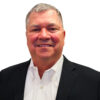
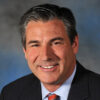
During this faculty led debrief session, we will explore key issues in team dynamics, leadership and psychology that were experienced during the Teamwork simulation. You will learn how to overcome limitations to group effectiveness through actionable best practices. The debrief and simulation are linked, when signing up for the simulation you will automatically be assigned to the debrief session.
Sudev Sheth

7:15am – 8:15am
Breakfast will be served at all SII hotel properties.
8:45am – 10:15am
(Also offered on Tuesday at 8:45am)
This engaging session focuses on common cognitive biases that afflict even the best decision makers. A number of biases are illustrated in the context of day-to-day judgments and decisions that we make in both our professional and personal lives. Through a series of examples, specific decision failures are identified and analyzed. The implications of these decision traps are examined, and recommendations on how to improve our decision skills offered.
Learning Objectives:
Roch Parayre

As DEI moves from being a “program” within an organization to becoming a strategic imperative for success in organizations, questions remain as to how to make DEI not only strategically important but also durable into the future. The compelling need for a commitment to Diversity, Equity, and Inclusion isn’t simply a moral imperative. It is also good for business, as document in several high-quality studies. A recent McKinsey study summed up the case for DEI in the workplace by noting that businesses and organizations that embraced DEI principles emerged as high-performing competitors in the marketplace. All of that adds up to stronger, more effective organizations that are better suited to the challenge of meeting their mission and achieving their goals in a competitive marketplace and a changing world. For DEI initiatives to endure, strategies must be action-oriented and measurable and go beyond “cosmetic” diversity that is simply checking the right box.
Learning Objectives:
CIMA®, CPWA®, CIMC®, and RMA℠ Eligible
The Honorable Rodney E. Hood
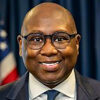
Previously titled: Building Better Retirement Systems in the Wake of the Global Pandemic
The pandemic has accentuated stresses on global aging, requiring policymakers and retirees to become newly aware of the need for better risk management tools to handle longevity and aging. I will evaluate how retirement systems have fared in the wake of the pandemic, and examine insurance and financial market products that may render retirement systems more resilient for the world’s aging population.
Learning Objectives:
CFP®, CIMA®, CPWA®, CIMC®, and RMA℠ Eligible
Olivia Mitchell

(Also offered on Wednesday at 1:30pm)
Diversity, Equity & Inclusion (DEI) has been a topic of conversation for employers for many years. In 2020, due to the pandemic and social unrest, the conversation seemingly hit a pivot point, with CEOs embarking on listening sessions around the world, making public proclamations and increasing the numbers of conversations on the topic.
With years of research on the subject now collected, we know how to turn conversations into results. Participants leave the session with a better appreciation for why DEI matters, what companies need to do about it and how individuals can be activated to be allies and sponsors.
Learning Objectives:
Pre-Class Assignment – Reading
CIMA®, CPWA®, CIMC®, and RMA℠ Eligible
Kezia Charles

(Also offered on Thursday at 3:20pm)
High performance requires effective execution and, for many organizations, change management. Unfortunately, major change efforts have a dismal track record. In multiple studies, highlighting the experiences of hundreds of companies initiating large-scale changes, the overwhelming results are poor. For example:
As the Harvard Business Review’s editor articulated so well in discussing why so many transformation efforts fail:
“…no business survives over the long term if it can’t reinvent itself. But human nature being what it is, fundamental change is often resisted mightily by the people it most affects: those in the trenches of the business. Thus, leading change is both absolutely essential and incredibly difficult” (Kotter 2007).
Learning Objectives:
Pre-Class Assignment – Reading
Jim Austin

(Also offered on Wednesday at 1:30pm)
In the #MeToo era, companies face increased pressure to ensure that opportunities and rewards are distributed equitably across the gender divide. In this course, we will discuss cutting edge empirical work exploring how gender bias manifests in the modern workplace, as well as what strategies and programs have proven most effective in countering it.
Mary-Hunter McDonnell

(Also offered on Wednesday at 1:30pm)
This course will help leaders explore how they can incorporate inclusion into their daily leadership actions. Using a mix of role-play, small group discussion, and individual action planning, participants will learn how to use the Inclusion M.B.A. (Mindset, Boldness, Action) model to enhance their effectiveness as inclusive leaders. The Inclusion MBA model treats inclusion as a leadership competency, and its components guide leaders to actions that demystify inclusion so it can be part of their regular leadership routines.
Learning Objectives:
Gena Cox’s book Leading Inclusion will be distributed to registered class participants. The book is sponsored by Raymond James.
Gena Cox

**We want to highlight for you that there is some content overlap between this session and Crucibles (offered on Friday at 8:45am). They feature different examples and research, but share some of the same tools. We suggest choosing only one of Andy Bernstein’s sessions unless you are okay with the overlapping content.
What is the most important thing for living a happier life — even in financial services? What about for building a higher-performing team?
One of SII’s most popular sessions, this enlightening exploration of happiness and team dynamics can improve your life both personally and professionally. Attendees will learn:
All attendees will receive a free membership to a special online site so you can continue applying what you learned after the session ends and share it with your families and teams.
CIMA®, CPWA®, CIMC®, and RMA℠ Eligible
Andrew Bernstein

In this course we will examine sustainability and ESG, two of the most significant current trends in financial services. The class will explore what ESG and sustainability are and…
In this course we will examine sustainability and ESG, two of the most significant current trends in financial services. The class will explore what ESG and sustainability are and the opportunities and risks they pose for financial services firms. The discussion will include commercial, regulatory and policy risks and opportunities. With billions of assets pouring into this space, financial service professionals need to understand both the meaning and implications for them and their firms.
CFP®, CIMA®, CPWA®, CIMC®, and RMA℠ Eligible
Keir Gumbs
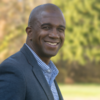
(Also offered on Wednesday at 8:45am)
The Teamwork simulation is an interactive, hands-on group activity. The brief description below is vague on purpose to not give too information and cloud the onsite experience. This simulation is done in 2-parts. Participants will go through the simulation then have a debrief session later in the day. The simulation and debrief sessions will be linked on the registration form. When signing up for this simulation you will automatically be assigned to the debrief session at 3:20pm.
Here’s past feedback from SII participants:
“I enjoyed the interactive nature of this session. Professor did a great job of observing the participants groups and providing feedback.”
“I really took away a lot from this simulation and it was a positive team environment where you learn by doing.”
“Interesting simulation case on leadership and team dynamics. During the debrief, Professor Sheth broke the points down so that they were easy to understand.”
Course Description
This simulation explores underlying individual and group dynamics when working in a team tasked with accomplishing goals. How do you effectively solve problems and make decisions when thrown difficult and unexpected challenges? By participating in this interactive session, you will experience firsthand how decision making by leaders and team members affects team performance in situations characterized by time pressure and competition.
Sudev Sheth

This session focuses on three cases in which the presenter led collaborative efforts to build the visions needed to energize and guide needed change in three very different and highly complex organizations. General Rapp was the commander (CEO/President) of each organization – all of whom knew he would only be with them for a finite period of time and thus they could hold their breath and outwait him. The first was a 5200-strong Corps of Engineers division that controlled all waterways, flood control, hydropower, environmental restoration, and regulation from St. Louis north and west to the Puget Sound (14 US states.) The second was the 17500-strong organization he led in Afghanistan where the U.S. needed to rapidly change the mindset from surge to drawdown and put all logistics and transportation infrastructure in place to meet the President’s guidance. The third was the 1100-strong US Army War College where he needed to change the culture of an academic institution. Most corporate and public entity visions he has seen are palliatives that say little and drive less. General Rapp found that, if well-constructed, attuned to the work force, and informing a strategic plan, a vision can be extremely powerful in creating organizational change. Discussing those cases and the resulting lessons are the focus of the session.
Learning Objectives:
William Rapp
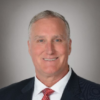
American society is transforming. It’s aging. And with aging, we accumulate more and more wealth. In time, we need that wealth for our well-being, pleasure, and legacy. With aging, we’re also more likely to experience cognitive impairments. Persons with cognitive impairment need care, but there are fewer and fewer people available to care for them, especially the free labor of close by family. Persons with cognitive impairment are at heightened risk to make errors in financial management or be victims of financial fraud or abuse. Together, these facts distill a powerful brew of challenges for older adults, their families, medicine and the banking and financial services industries. This course will overview the common causes of cognitive complaints and cognitive impairment and the latest initiatives to improve the diagnosis and care of these disorders, and to address fraud and abuse. Particular attention will be paid to issues at the intersections of cognitive health and wealth. These include understanding what are the causes of cognitive problems, and how they impact of financial capacity. A smart firm will strive to practice “whealthcare” (learn more at www.whealthcare.org). The lecturer will examine how a firm might achieve this through staff training, effective communication with clients and their families (especially in light of FINRA rule 4512), and deploying novel technologies to monitor and detect changes in financial capacity, and as well, fraud and abuse. The class will have a look into the future of the monitored brain. Attendees will leave inspired to make changes in the ways they conduct business so that they can better serve the health and wealth of the older clients and their families.
Learning Objectives:
CIMA®, CPWA®, CIMC®, and RMA℠ Eligible
Jason Karlawish

10:35am – 12:05pm
(Also offered on Tuesday at 10:35am)
This session will explain why the Federal Reserve’s response to the Covid Pandemic has caused so much inflation and why they may be over responding to inflation today. We will also examine the valuation of the market and the forecast for interest rates.
Learning Objectives:
CFP®, CIMA®, CPWA®, CIMC®, and RMA℠ Eligible
Jeremy Siegel

In theory, retirement begins on the day an employee receives their last paycheck—that is also the day that they begin to looking at their investments differently. The paycheck is, in essence, an investment safety net and one that no longer exists for a retiree. Shifting demographics, elongated lifespans, increasing inflation expectations, the decline in pensions, and secular changes in the interest rate environment are just some of the issues forcing the financial services industry to redraw the playbook for retirement income. This session will explore the differences between the accumulation and distribution phases of the investing cycle. It will detail the history of retirement cash flow generation and introduce a new, more diversified approach using a wide array of investment solutions available in today’s marketplace. With more than $2.5 trillion in self-managed 401k assets preparing for rollover in the next decade, professional advice has never been more needed. For many, particularly the underfunded, it could be the difference between eating caviar or cat food in retirement.
Learning Objectives:
CFP®, CIMA®, CPWA®, CIMC®, and RMA℠ Eligible
Bryan Piskorowski

(Also offered on Tuesday at 10:35am and Thursday at 3:20pm)
In this course Professor Tiffany will review the origins of the current global economy and how recent events have called into question the sustainability of free and open markets that were a key outcome of the historically prosperous post-WWII international political economy. The presentation will be preceded by a required short video that participants view prior to arriving in Philadelphia. The video will provide background content so that the live session can focus exclusively on current issues and allow sufficient time for participant discussion. To facilitate this, all attendees will be required to respond to multiple-choice questions about the video content; the responses will be presented in March.
The US elections of 2016 and 2020 created a potentially profound shift in recent American economic policy, both domestic and global– and the mid-term elections of 2022 do not appear to have not altered this trajectory. In the international arena the prior President staked out positions radically different from those of the post-World War II “Bretton Woods System” engineered by the US. This latter political-economic regime guided much of the world as “globalization” took hold and many Emerging Nations—especially China—prospered in what was termed the “Neoliberal Order.” Yet one critical result of Trump’s nationalistic “America First” agenda has been deep uncertainty about the future prospects of international trade policies, which played a significant role in the overall growth of global prosperity for the past 70 years- including in the financial services sector. And at least so far, the Biden Administration has done little to alter this path—especially with regard to US-China economic and political relations. Indeed, it is this latter issue which is driving so much of the long-term considerations about America’s economic future. The video will provide details concerning these events and, hopefully, stimulate your thoughts prior to the “live” sessions at Wharton.
March class: The class will provide a forum in which all participants will be encouraged to offer their own perspective on key issues regarding “Globalization” and its prospects going forward. The session will begin with (a) Professor Tiffany’s explication of five key take-aways from his video commentary, (b) a review of aggregated participant responses from the mandatory multiple-choice questions, (c) brief sharing by participants of ideas and insights, and (d) an open-mic discussion about what actions might be taken next on these important issues.
Learning Objectives:
CFP®, CIMA®, CPWA®, CIMC®, and RMA℠ Eligible
Paul Tiffany

(Also offered on Tuesday at 10:35am)
The key to a company’s financial success is strategy execution. Companies that have success in long term value creation have a passion for execution. This session will use financial tools to analyze the differences between value creating and value destroying companies and show that the pattern is the same in every industry and in every part of the world. At the strategy formulation stage, it is important to select a strategy that the company understand its capabilities to execute more effectively and increase the likelihood of success. It is important to realize that profitability is necessary, but it is very fragile and it can disappear rapidly as market systems evolve. It is important to be vigilant about the changes taking place in your industry.
Learning Objectives:
Pre-Class Assignment – Reading
CIMA®, CPWA®, CIMC®, and RMA℠ Eligible
Joseph Perfetti

Inflation continues to be the dominant global concern, even in a world of complex geopolitical dynamics that include military conflict in Ukraine, territorial flexing by China, and entrenched societal polarization. We expect the evolution of inflation and commensurate central bank responses to remain the prevailing theme in 2023. While waiting for the wave to break, however, investors must learn to surf.
Given the interplay between inflation and monetary policy, many see a recession as a natural byproduct of tighter financial conditions. History credibly informs such a view, but a US recession may not be a forgone conclusion given a healthy financial system, strong labor demand, and robust private sector. In the Euro area and the UK, heightened sensitivity to external energy supply makes a recession probable, if not already in progress.
The adjustment to a higher inflationary regime has been painful, with the traditional 60 / 40 portfolio delivering historically poor returns in 2022. Even so, we think the opportunity set has been reset, with fixed income reasserting itself as a critical driver of diversification and cash flow.
In this session, we explore how investors may navigate the ongoing period of inflation adjustment with emphasis on:
Learning Objectives:
CFP®, CIMA®, CPWA®, CIMC®, and RMA℠ Eligible
Candice Tse

This session will provide a mid-level treatment of ETF’s. After a review of ETF’s, the industry and its recent growth, the session will review recent development. Covered will be a discussion of Active ETF’s, factor-based ETF’s, Index-Mining and back testing, ETF’s and the availability of Alpha, ETF cost of ownership and trading, and the effects of ETF growth on markets. The session will conclude with a view of the future in the industry.
CFP®, CIMA®, CPWA®, CIMC®, and RMA℠ Eligible
Christopher Geczy

Ideal for: Participants who would like to get familiar with the private equity industry, learn the anatomy of a deal, industry trends, and understand the sources of value creation and the drivers of return of private equity funds.
Private equity is an asset class that has the potential to generate sustainable long-term returns for its investors. Although it is a relatively new asset class with some unique characteristics that may not be familiar to investors, it has become a key component of many investors’ portfolios. In this entry-level elective session, we will cover the structure of a private equity fund and describe how a private equity fund operates and governs its portfolio companies. We will talk about the changing trends in the private equity industry. We will also discuss whether and how a private equity fund creates value in a changing macroeconomic landscape.
CFP®, CIMA®, CPWA®, CIMC®, and RMA℠ Eligible
Burcu Esmer

The Federal Reserve has embarked on a very aggressive tightening path. Central banks globally are hiking rates. What are some stylized facts from previous hiking cycles? The emphasis of this session is on understanding the different operating frameworks of major central banks and the historical facts around changes in monetary policy.
Learning Objectives:
CFP®, CIMA®, CPWA®, CIMC®, and RMA℠ Eligible
Brian Jacobsen

The worst thing an investor can do is allow their emotions to become their portfolio’s worst enemy. Since fear is frequently a greater motivator than greed, how can an investor extract their emotions from the equation and continue to be appropriately allocated? Investing is a journey. By being forewarned of potential hazards ahead, through an understanding of stock market seasonality, cycles, and recovery characteristics, even the more cautious investor can leverage history to help calm their nerves and stay the course.
Learning Objectives:
CFP®, CIMA®, CPWA®, CIMC®, and RMA℠ Eligible
Sam Stovall

12:15pm – 1:15pm
Check your mobile app for location.
1:30pm – 3:00pm
Business, as usual, no longer exists. As US General Eric Shinseki once said, “If you dislike change, you’re going to dislike irrelevance even more.” Constant disruption, at an ever-increasing pace, creates a great deal of anxiety and stress. To survive and even thrive in this pressure-filled environment, individuals, and organizations must increase their AQ (Adaptability Quotient.)
From a business standpoint, AQ is the ability of your organization to be agile and adjust course in response to unexpected shifts in the marketplace. On a personal level, AQ measures your ability to react quickly and effectively to change and bounce back in the face of failure.
Learning Objectives:
John Spence

This session presents a novel approach to thinking about contemporary leadership challenges. The early years of the American Revolution present a spectacularly rich tapestry of leadership challenges and issues that inform today’s leaders. By anchoring the leadership lessons in historical vignettes, re-examining several myths, and connecting leader challenges to today, the session helps make learning leadership “sticky,” memorable, and useful to modern leaders and managers. As Mark Twain is attributed to have written, “History doesn’t repeat itself, but it often rhymes.” Participants in this session will be expected to do select readings and “play” key Revolutionary War leaders in class discussion about the contemporary leadership lessons gleaned from important decisions and events. The presenter is a retired Army major general who was president of the US Army War College, a recent resident lecturer at Harvard Kennedy School, and now a leadership consultant with numerous S&P 500 companies.
Learning Objectives:
Pre-Class Assignment – Brief Exercise
William Rapp

(Also offered on Thursday at 3:20pm)
This session will discuss the science of resilience and well-being and teach actionable skills to navigate adversity and thrive in challenging environments.
Learning objectives:
Attendees will have the opportunity to explore what they learn through an interactive learning lab.
Pre-Class Assignment – Reading
Karen Reivich

(Also offered on Wednesday at 10:35am)
Impact and ESG investing has skyrocketed in popularity with investors worldwide. But many people don’t realize how wide-ranging these disciplines have become. Twenty years ago it was stock or occasionally other portfolios which screened companies in or out based on their social investing characteristics. Today, ESG and social-impact oriented strategies include new products and asset classes, influencing corporate governance through shareholder activism, Corporate Social Responsibility, Donor-Advised Funds, and bold for-profit approaches to helping the poor in the developing world.
This session provides an overview of the most important ESG and impact-investing concepts and styles and a look at whether investment return need be sacrificed for social benefit. It offers a high-level view of the products and strategies now permeating not only institutional, but retail investing as well.
CFP®, CIMA®, CPWA®, CIMC®, and RMA℠ Eligible
Christopher Geczy

(Also offered on Thursday at 3:20pm)
Do leadership traits matter? What do leaders do? Who are leaders? Do males and females see leadership in different ways? The session builds on the instructor’s exploratory study of thousands of student-generated images and essays in order to answer these questions. In advance of the class, participants are asked to: 1. Consider, “What is the essence of leadership” 2. Find or create an image that captures their understanding. 3. Write a short (100 word) response explaining why. By the end of the session, participants will have a better understanding of their own assumptions about leadership, of how men and women see leadership the same and differently, and of how they might move from awareness to action.
Learning Objectives:
Pre-Class Assignment – Short Exercise
Anne Greenhalgh

(Also offered on Thursday at 3:20pm)
The Herrmann Brain Dominance Instrument (HBDI™) is a 120-question diagnostic survey, the answers to which indicate an individual’s thinking style preferences. Our minds have preferred modes of operating that impact how we see the world, how we interpret what we see, and how we communicate with others who are also operating from their own preferred modes of thinking and speaking. Thinking preferences influence communication, decision-making, problem solving, and management styles. By understanding their thinking style preferences, participants will gain a new perspective of themselves and the people with whom they interact each day. In this HBDI session, a series of interactive exercises is used to get participants comfortable with the model, conversant about each of the 4 styles, and aware of the dangers of over-simplifying the process. This session offers a wide range of exercises and will choose a combination of exercises specific to each group’s needs. Participants will also explore when thinking styles are problematic. Through development of self-inventory, participants will learn about their own hot buttons and the hot buttons of others and develop strategies for addressing these situations in a constructive manner. During the program we also address the effects of individual and team HBDI data on some main leadership issues of our time, like enhancing our agility and creative thinking in times of fast pace change and ambiguity. This course will require a 120-question survey to be completed prior to the participants’ arrival.
Learning Objectives:
Pre-Class Assignment – Assessment
Chuck McVinney
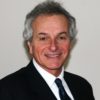
The session focuses on the question of how to sustain a successful enterprise during periods of disruptive change. It draws on case studies and recent examples to discuss the challenges of managing discontinuous changes in an industry. The instructor will share frameworks that enable a systematic approach to evaluating and managing the different types of changes confronting a firm both from strategic and organizational perspectives.
Learning Objectives:
Pre-Class Assignment – Reading
CIMA®, CPWA®, CIMC®, and RMA℠ Eligible
Rahul Kapoor

(Also offered on Wednesday at 1:30pm)
Most leaders are good at focusing on short-term requirements such as next quarter’s results or current competitor moves. The problem is that in times of change and uncertainty, short-term initiatives leave entities vulnerable to missing or underplaying dramatic market changes or emergent new competitors.
Based on the work by Paul Schoemaker and George Day, as detailed in their recent book, See Sooner, Act Faster: How Vigilant Leaders Thrive in an Era of Digital Turbulence, this seminar will outline how vigilant leaders enable their organizations to:
Learning Objectives:
Pre-Class Assignment – Reading
Jim Austin

This is a session that covers recent developments in global economic growth and innovation, with an emphasis on current events and policy applications. The session discusses the current drivers of innovation and economic growth and analyzes the strengths and challenges of financial analysis for long-term innovative investment decisions. Topics covered include: national income accounting, total factor productivity, investment in capital and labor, inflation, interest rates, monetary policy, net present value and the internal rate of return.
Learning Objectives:
CFP®, CIMA®, CPWA®, CIMC®, and RMA℠ Eligible
Jules Van Binsbergen

(Also offered on Thursday at 3:20pm)
Our thoughts heavily influence our behavior. Having deliberate frameworks to organize our thoughts can thus help influence our behavior for the better. This session is a research-based introduction to such frameworks. The skills learned in the module are a steppingstone to sustainable behavioral change, supporting ways in which people can thrive despite adversity. The module targets three of the researched mental frameworks that help build resilience, improve mental health, and help counter stress. The techniques are also useful to those seeking to improve engagement at work. The hands-on module is designed to help participants practice skills in class and leave with easy to use tools that can be practically applied in their lives.
Module Overview:
| Module | Topic | Participants will learn to |
| 1 | Mental Agility:
· Practical frameworks · Resilient mindset
|
· Adopt easy to use tools to function with clarity of thought during challenging times
· Develop a resilient mindset to fight adversity and invite growth · Develop skills to adopt an optimistic outlook in the face of adversity
|
The module would be particularly useful for anyone who is having difficulty bouncing back from adversity, facing stress, or has a hard time coping with work demands. The workshop is geared to develop skills that are not traditionally taught in business curriculum, however, are necessary in business and personal life.
CIMA®, CPWA®, CIMC®, and RMA℠ Eligible
Faisal Khan

Do you work on a team? Do you wish your team was more cohesive, more enjoyable, and performed at a higher level?
In this eye-opening and practical session, you’ll learn why great teams are worth building and how to get there. You’ll see that great teams aren’t free of differences and disagreements — but they are highly skilled in using those differences as fuel to build greater accountability, empathy, and “psychological safety.”
This session will explain:
Great teams don’t happen by accident. They happen through a clear framework, actionable tools, and practice. If you’re ready to take your team to the next level, this session can help.
Andrew Bernstein

(Also offered on Wednesday at 8:45am)
Effective leaders recognize they must carefully manage both the external and internal environment. They inspire, provide clarity of purpose, seek diversity of thought and contrary views, and build a culture of trust. Leaders also develop a keen awareness of external forces and turn threats into opportunities by building an organizational capability of adaptability. In short, leaders build a PERCEPTIVE organization that is poised to achieve and maintain sustainable positive results.
Learning Objectives:
Kathy Pearson

Consumers today demand faster, simpler, and automated processes to connect with products and services. Financial institutions recognize the need to integrate technology to respond to these trends. They are, however, uniquely challenged because of the vital role they play as an intermediary in people’s financial lives and the associated regulation of the industry.
Many financial leaders recognize that while financial services is their competency, they are actually in the “business of trust” – that is, if they are not a trusted partner to clients and consumers, they won’t be able to serve their purpose of delivering financial security and well-being.
Research from the American College Maguire Center for Ethics in Financial Services shows that simplicity is viewed as a proxy for trust. In other words, processes and services that are simple to navigate and understand, if they are transparent and truthful, are viewed as being more trustworthy. Yet, as most professionals recognize, simplifying highly complex systems takes great knowledge, skill, and coordination. While big data, algorithms, and AI can help enable simplified processes and lower costs, the more data used and the faster it is used will risk disparate results for different populations. Unfair discrimination can occur when the data has bias embedded in it, or the way that it is automated effects populations differently (e.g., communities of color or women).
This session will focus on the management and ethics challenge when using automation, artificial intelligence (AI), and technology in financial services.
Learning Objectives:
CIMA®, CPWA®, CIMC®, and RMA℠ Eligible
Azish Filabi

We believe that diverse teams lead to better outcomes. More perspective and backgrounds can drive higher quality decision making, improved deal sourcing, and better ability to attract and retain talent, ultimately contributing to business longevity and investment performance.
In this course, we will examine the increasing power of women in the global economy and how women can uplift investment and business performance in the financial industry. Within asset management we explore the impact of diversity on investment teams through an asset allocation study of thousands of portfolios built by US financial advisors. Our findings show that diverse teams built portfolios with higher returns and more sophisticated investments, with no risk differential. Yet, mutual fund managers impact a significant amount of capital, but lag in gender diversity measures. In wealth management, assets under management and revenue boosts from working with women. Inheritance dynamics imply that managers should not expect their client bases to stay male-dominated moving forward.
Diversity can be improved both in terms of women in investing and investing in women. Across investors and asset allocators, we see common best practices for improving women’s representation in asset management and think it’s important for the industry to ACT NOW.
Learning Objectives:
CFP®, CIMA®, CPWA®, CIMC®, and RMA℠ Eligible
Candice Tse

1:30pm – 4:50pm
This session will involve an experiential case where participants will play the role of a board facing an unexpected and shocking ethical crisis. The case is episodic, allowing participants to make decisions as they obtain new information. The case will provide participants an opportunity to grapple with important contemporary issues including, i) how to balance stakeholder and shareholder interests, ii) how leaders balance considerations of transparency and control when faced with damaging internal information, iii) how to structure an internal corporate investigation, and iv) how to determine whether an ethical lapse is an individual versus organizational issue. A former federal prosecutor will join Professor McDonnell in debriefing the case to shed additional light on its legal and investigative components.
Mary-Hunter McDonnell

The world we live in is increasingly Volatile, Uncertain, Complex and Ambiguous (VUCA). Because of this, professionals from many industries require a high level of creative problem solving and innovation in their work. It is increasingly clear that the way we have done things in the past is no longer likely to be the way we do things in the future.
Design Thinking is a creative problem-solving methodology that can help business leaders find new, solutions to increasingly complex global challenges. This session will introduce the basic elements of design thinking, including empathy, ideation, and iteration and provide examples of how to use those techniques to develop new products, identify new business opportunities, and re-design internal operations. Examples of how design thinking can help financial services companies innovate will make the theory concrete and applicable. Participants will learn a human-centered approach for generating and evaluating new ideas and will identify opportunities to apply that process in their daily work.
Through interactive experiences in the Design Thinking course, attendees will:
Sarah Rottenberg

(Also offered on Tuesday at 1:30pm)
The Negotiation Simulation is an interactive, small group decision-making simulation. The brief description below is vague on purpose to not cloud your onsite experience. This simulation has been highly rated by previous SII participants. Here’s past feedback:
“VERY impactful class. Loved the group breakout and game simulation. Post-game conversation very enlightening as to all of the physical and mental implications to all negotiations and their outcomes.”
“Great team breakout sessions with negotiations varying in accomplishing our goal. Good team exercise that builds trust within your team and working hard to gain the other team’s trust.”
“This session was one of the better sessions that I have attended as part of this curriculum. The simulation was not only a lot of fun, but it brought to light all of the different variables that can erode or aide in successful negotiations. This is content that can immediately be applied to both my professional and personal life.”
Course Description
You will work as a team to make a series of decisions under uncertainty and navigate the tension between cooperation and competition with others.
Learning Objectives:
Pre-Class Assignment – Reading
CIMA®, CPWA®, CIMC®, and RMA℠ Eligible
Maurice Schweitzer

(Also offered on Tuesday at 1:30pm and Wednesday at 8:45am)
This workshop will help strengthen your influence and persuasion skills. Everybody needs these skills to build momentum for important initiatives, achieve organizational alignment, and implement strategies. Through a series of interactive discussions and role-plays, you will answer four key questions in this workshop: What are the steps that led to buy-in? What is your communication style and how do you use to engage stakeholders? How do you make your ideas simple and compelling? How do you generate lasting commitment? The workshop content is drawn from the book The Art of Woo: Using Strategic Persuasion to Sell Your Ideas (Portfolio/Penguin), co-authored by G. Richard Shell and Mario Moussa. This class will require pre-work to be completed prior to the participants’ arrival.
Learning Objectives:
Pre-Class Assignment – Assessment
CIMA®, CPWA®, CIMC®, and RMA℠ Eligible
Mario Moussa

3:20pm – 4:50pm
(Also offered on Monday at 3:20pm)
You can’t drive a car looking in the rear view mirror. Traditional metrics are backward looking. They keep score. What did you do last month, last quarter and last year? Companies need to keep score to assess performance: growth, margin, return on equity, and total shareholder return are common metrics. They do not tell you how the company will do in the future. Value is about the future. In the age of agile, companies need to increasingly start putting forward looking and predictive metrics on their dashboards. The Agile Dashboard was researched and developed to help organizations address this gap. The Agile Dashboard looks at three categories of metrics: Speed, Interaction Time and Pivot. These are critical elements for leaders to monitor whether their organizations are prepared to operate successfully in an uncertain future. This session will explain each of the three sections of the Agile Dashboard, provide metrics for each and share examples of their applicability to financial organizations.
Pre-Class Assignment – Reading
CIMA®, CPWA®, CIMC®, and RMA℠ Eligible
Joseph Perfetti

(Also offered on Thursday at 1:30pm)
This session will discuss the science of resilience and well-being and teach actionable skills to navigate adversity and thrive in challenging environments.
Learning objectives:
Attendees will have the opportunity to explore what they learn through an interactive learning lab.
Pre-Class Assignment – Reading
Karen Reivich

Is the Fed too tight or not, and what does this mean for the financial markets? A debate on Federal Reserve policy between two experts on monetary policy, Donald Kohn, Former Vice Chair of the Federal Reserve, and Dr. Jeremy Siegel of The Wharton School. Hear from these experts as they provide their economic forecasts for 2023.
CIMA®, CPWA®, CIMC®, and RMA℠ Eligible
Sam Stovall, Jeremy Siegel, Donald Kohn



(Also offered on Wednesday at 1:30pm)
As organizations become more complex and global, many senior leaders struggle to “think globally but act locally”. At the heart of this challenge is the need to understand the enterprise system, and cascade that understanding throughout the organization. This session explores the barriers to “enterprise thinking” and breaking down organizational silos. The participants are then given various concepts and tools to promote a stronger enterprise mindset, including those that address clarity, alignment, culture and accountability.
Learning Objectives:
Pre-Class Assignment – Video
Kathy Pearson

(Also offered on Thursday at 8:45am)
High performance requires effective execution and, for many organizations, change management. Unfortunately, major change efforts have a dismal track record. In multiple studies, highlighting the experiences of hundreds of companies initiating large-scale changes, the overwhelming results are poor. For example:
As the Harvard Business Review’s editor articulated so well in discussing why so many transformation efforts fail:
“…no business survives over the long term if it can’t reinvent itself. But human nature being what it is, fundamental change is often resisted mightily by the people it most affects: those in the trenches of the business. Thus, leading change is both absolutely essential and incredibly difficult” (Kotter 2007).
Learning Objectives:
Pre-Class Assignment – Reading
Jim Austin

(Also offered on Thursday at 1:30pm)
Do leadership traits matter? What do leaders do? Who are leaders? Do males and females see leadership in different ways? The session builds on the instructor’s exploratory study of thousands of student-generated images and essays in order to answer these questions. In advance of the class, participants are asked to: 1. Consider, “What is the essence of leadership” 2. Find or create an image that captures their understanding. 3. Write a short (100 word) response explaining why. By the end of the session, participants will have a better understanding of their own assumptions about leadership, of how men and women see leadership the same and differently, and of how they might move from awareness to action.
Learning Objectives:
Pre-Class Assignment – Short Exercise
Anne Greenhalgh

(Also offered on Thursday at 1:30pm)
The Herrmann Brain Dominance Instrument (HBDI™) is a 120-question diagnostic survey, the answers to which indicate an individual’s thinking style preferences. Our minds have preferred modes of operating that impact how we see the world, how we interpret what we see, and how we communicate with others who are also operating from their own preferred modes of thinking and speaking. Thinking preferences influence communication, decision-making, problem solving, and management styles. By understanding their thinking style preferences, participants will gain a new perspective of themselves and the people with whom they interact each day. In this HBDI session, a series of interactive exercises is used to get participants comfortable with the model, conversant about each of the 4 styles, and aware of the dangers of over-simplifying the process. This session offers a wide range of exercises and will choose a combination of exercises specific to each group’s needs. Participants will also explore when thinking styles are problematic. Through development of self-inventory, participants will learn about their own hot buttons and the hot buttons of others and develop strategies for addressing these situations in a constructive manner. During the program we also address the effects of individual and team HBDI data on some main leadership issues of our time, like enhancing our agility and creative thinking in times of fast pace change and ambiguity. This course will require a 120-question survey to be completed prior to the participants’ arrival.
Learning Objectives:
Pre-Class Assignment – Assessment
Chuck McVinney

(Also offered on Tuesday at 10:35am and Thursday at 10:35am)
In this course Professor Tiffany will review the origins of the current global economy and how recent events have called into question the sustainability of free and open markets that were a key outcome of the historically prosperous post-WWII international political economy. The presentation will be preceded by a required short video that participants view prior to arriving in Philadelphia. The video will provide background content so that the live session can focus exclusively on current issues and allow sufficient time for participant discussion. To facilitate this, all attendees will be required to respond to multiple-choice questions about the video content; the responses will be presented in March.
The US elections of 2016 and 2020 created a potentially profound shift in recent American economic policy, both domestic and global– and the mid-term elections of 2022 do not appear to have not altered this trajectory. In the international arena the prior President staked out positions radically different from those of the post-World War II “Bretton Woods System” engineered by the US. This latter political-economic regime guided much of the world as “globalization” took hold and many Emerging Nations—especially China—prospered in what was termed the “Neoliberal Order.” Yet one critical result of Trump’s nationalistic “America First” agenda has been deep uncertainty about the future prospects of international trade policies, which played a significant role in the overall growth of global prosperity for the past 70 years- including in the financial services sector. And at least so far, the Biden Administration has done little to alter this path—especially with regard to US-China economic and political relations. Indeed, it is this latter issue which is driving so much of the long-term considerations about America’s economic future. The video will provide details concerning these events and, hopefully, stimulate your thoughts prior to the “live” sessions at Wharton.
March class: The class will provide a forum in which all participants will be encouraged to offer their own perspective on key issues regarding “Globalization” and its prospects going forward. The session will begin with (a) Professor Tiffany’s explication of five key take-aways from his video commentary, (b) a review of aggregated participant responses from the mandatory multiple-choice questions, (c) brief sharing by participants of ideas and insights, and (d) an open-mic discussion about what actions might be taken next on these important issues.
Learning Objectives:
CFP®, CIMA®, CPWA®, CIMC®, and RMA℠ Eligible
Paul Tiffany

(Also offered on Thursday at 1:30pm)
Our thoughts heavily influence our behavior. Having deliberate frameworks to organize our thoughts can thus help influence our behavior for the better. This session is a research-based introduction to such frameworks. The skills learned in the module are a steppingstone to sustainable behavioral change, supporting ways in which people can thrive despite adversity. The module targets three of the researched mental frameworks that help build resilience, improve mental health, and help counter stress. The techniques are also useful to those seeking to improve engagement at work. The hands-on module is designed to help participants practice skills in class and leave with easy to use tools that can be practically applied in their lives.
Module Overview:
| Module | Topic | Participants will learn to |
| 1 | Mental Agility:
· Practical frameworks · Resilient mindset
|
· Adopt easy to use tools to function with clarity of thought during challenging times
· Develop a resilient mindset to fight adversity and invite growth · Develop skills to adopt an optimistic outlook in the face of adversity
|
The module would be particularly useful for anyone who is having difficulty bouncing back from adversity, facing stress, or has a hard time coping with work demands. The workshop is geared to develop skills that are not traditionally taught in business curriculum, however, are necessary in business and personal life.
CIMA®, CPWA®, CIMC®, and RMA℠ Eligible
Faisal Khan

(Also offered on Tuesday at 3:20pm)
Previously titled: Strategies for Life Success
When individuals understand how to get the best out of themselves, they can draw out the best in their team members and peers. Regrettably, most people fail to invest time to be self-reflective and create meaningful goals and then hold themselves accountable for progress towards those goals. In this session we will review the fundamental elements of creating a more happy, balanced, and successful life.
Learning Objectives:
John Spence

During this faculty led debrief session, we will explore key issues in team dynamics, leadership and psychology that were experienced during the Teamwork simulation. You will learn how to overcome limitations to group effectiveness through actionable best practices. The debrief and simulation are linked, when signing up for the simulation you will automatically be assigned to the debrief session.
Sudev Sheth

6:30pm – 8:30pm
Sponsored by Broadridge Financial Solutions, Inc.
Join fellow participants for a night of networking and fun at The Philadelphia Museum of Art. Buses will only be provided from/to the SII hotel properties.
7:15am – 8:15am
Breakfast will be served at all SII hotel properties.
8:45am – 10:45am
Hear insights on the future of the industry as leaders of Loop Capital, Fidelity and RW Baird engage in a discussion with Kenneth E. Bentsen Jr. of SIFMA.
Kenneth E. Bentsen, Jr., James Reynolds, Jr., Maggie Serravalli, John G. Taft

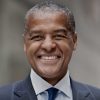


We want to highlight for you that there is some content overlap between this session and The Most Important Thing on Thursday at 8:45am. They feature different examples and research, but share some of the same tools. We suggest choosing only one of Andy Bernstein’s sessions unless you are okay with the overlapping content.
Crucibles are high-temperature containers used to transform metals. In management literature, they refer to challenging experiences that can forge more humble and effective leaders — or can cause leaders and organizations to melt down and fail.
We all face crucibles — at home, in our organizations, and in the world. But most of us don’t know how to deal with them as effectively as we might.
In this session, you’ll explore the dynamics of crucibles in a way that is both illuminating and actionable. Bringing together social psychology, evolutionary biology, and leadership studies, this program gives you a framework and toolkit to navigate crucibles better, both personally and professionally.
Learning Objectives:
Andrew Bernstein

Consider this, 65% of customers think that most of the companies they do business with need to improve the experiences they provide, up from 35% in 2019. Customer behavior and consumer experience expectations are evolving at a blistering pace. It’s challenging for companies to keep up – from having the right tech infrastructure in place, to understanding what motivates customers today, to continually improving CX – and all while meeting financial targets in a challenging market.
In this session we’ll explore digitization through the lens of “what companies can do differently to succeed when the growing gets tough.” Join this session to hear insights from a panel of multi-disciplinary experts within and beyond the financial services industry on how to reframe your digitization challenges as a growth opportunity.
Attendees will:
Michelle Jackson, Susan Joseph, Alex Mirarchi, Kim Nguyen, Matt Swain




Data is the new Oil. Organizations that embrace data as a centerpiece of the architecture will be best positioned for the data-driven future. Join a conversation hosted by Doug Besso, Chief Technology Officer, Hightower Advisors and a panel of industry experts to hear their perspectives. You will learn how data can not only meet your organization’s goals but transform what the goals can be.
The expert panelists for this session are:
Doug Fritz, Co-Founder and CEO of F2 Strategy. Doug is a veteran CTO and sought-after WelthTech Consultant. Doug and his team focus on technology driven operations, digital client engagement, performance, and implementation of solutions.
Matthias Kuhlmey is the Chief Development Officer of Hightower. Among many responsibilities, Matthias leads a team focused on the Next Gen Wealth Management platform and teaches at Columbia University’s respected school of Professional Studies.
Dr. Vinay Nair is the Founder and CEO of TIFIN, a fintech platform that drives personalization for wealth using AI and investment intelligence. Vinay, is a former finance faculty member at Wharton, with teaching experience at schools such as MIT and Columbia.
CIMA®, CPWA®, CIMC®, and RMA℠ Eligible
Doug Besso, Doug Fritz, Matthias Kuhlmey, Vinay Nair



